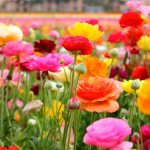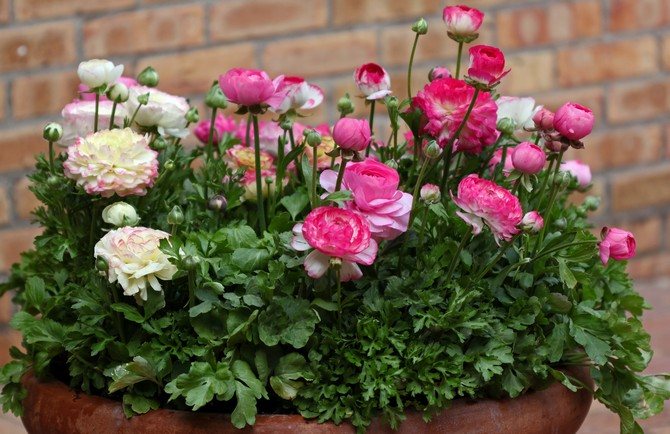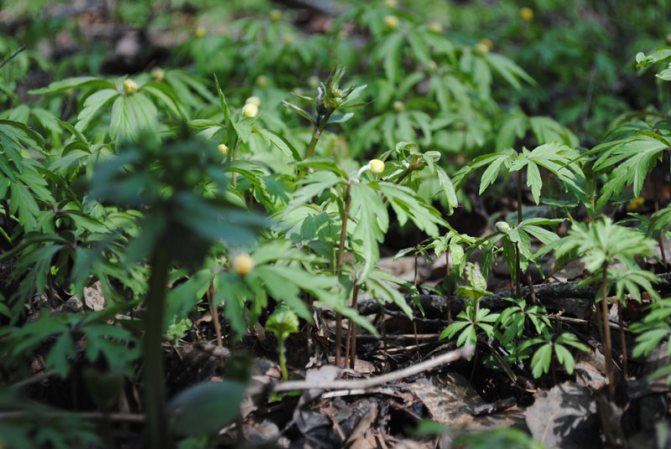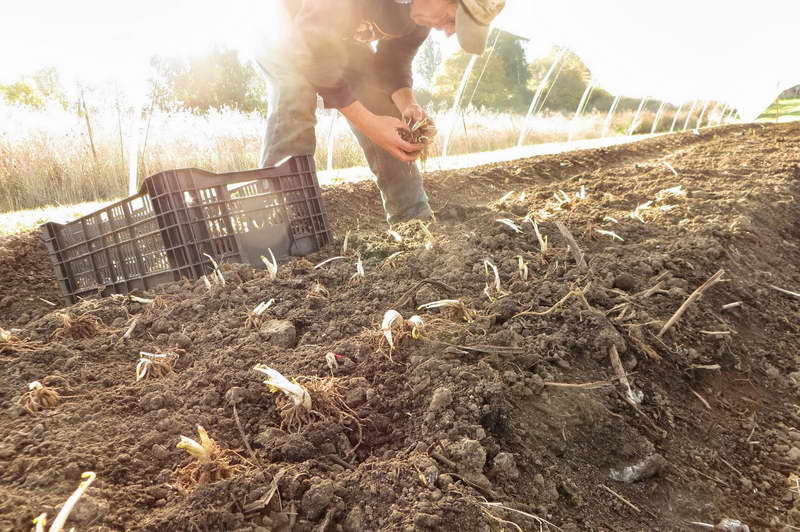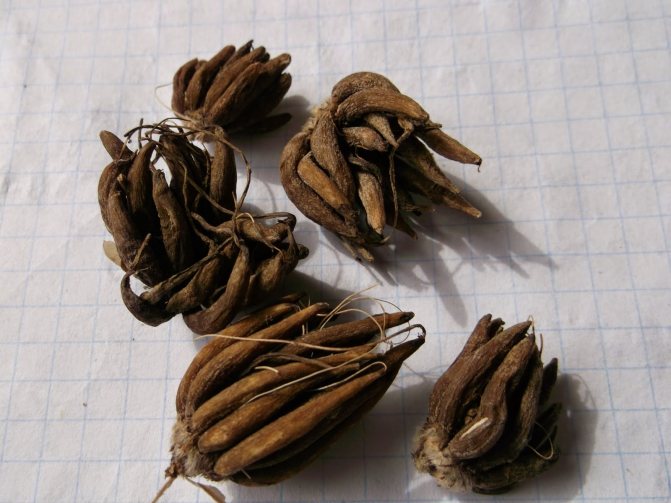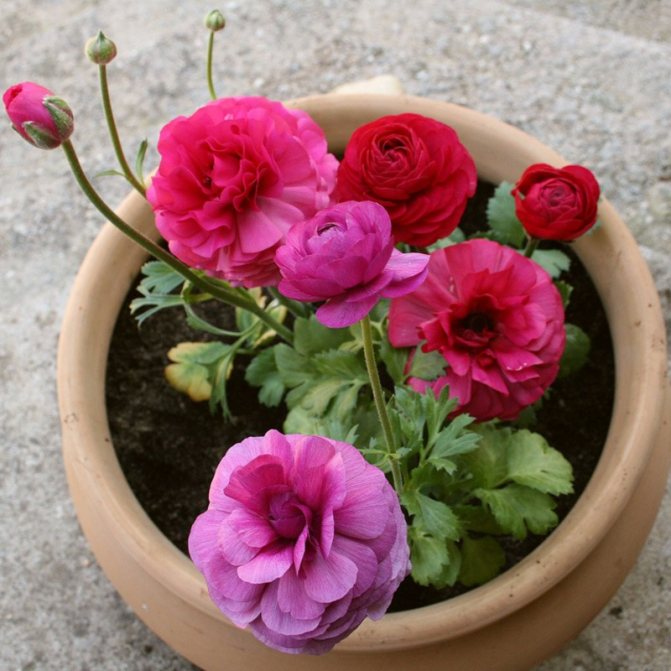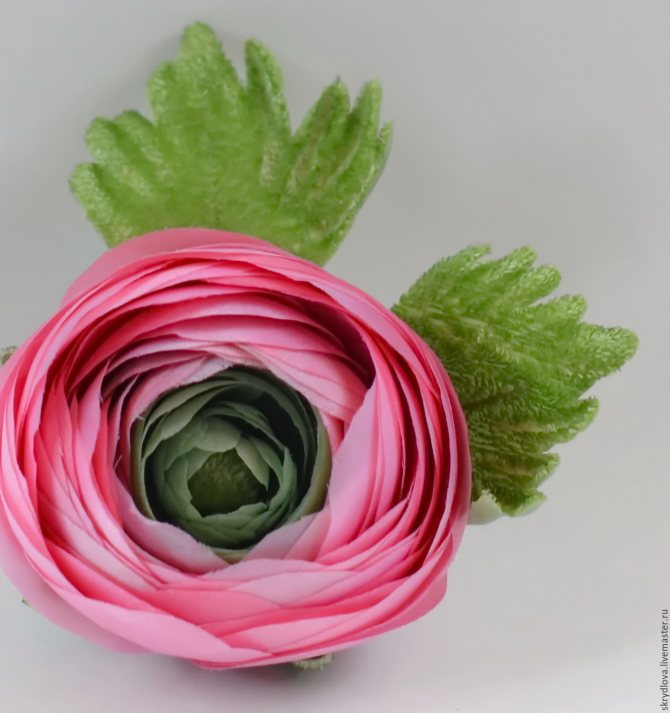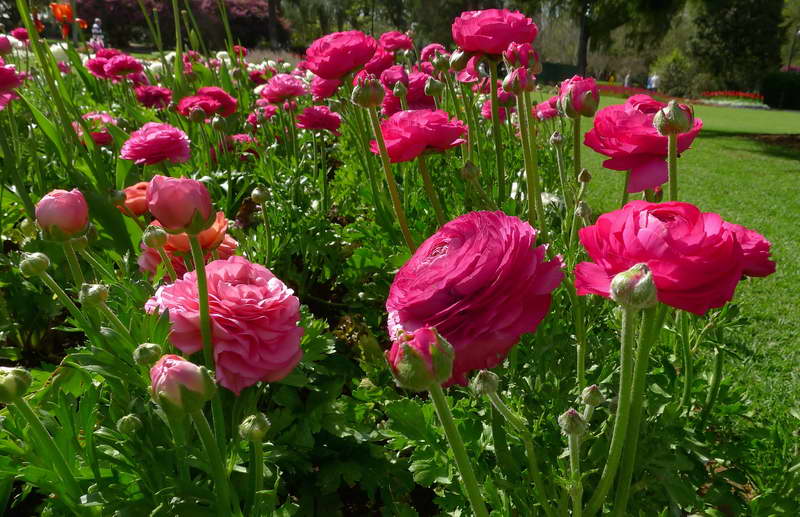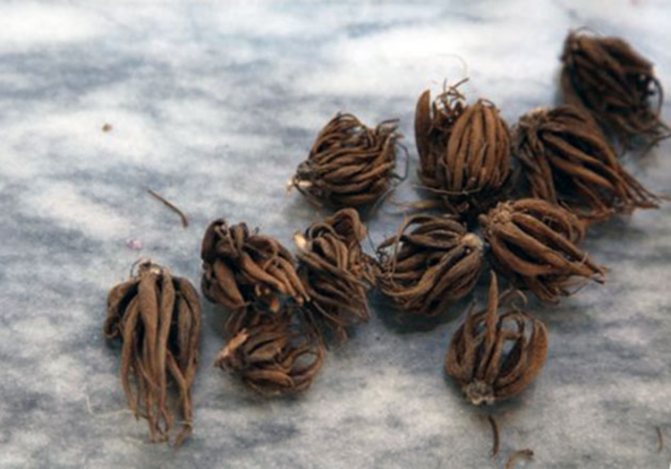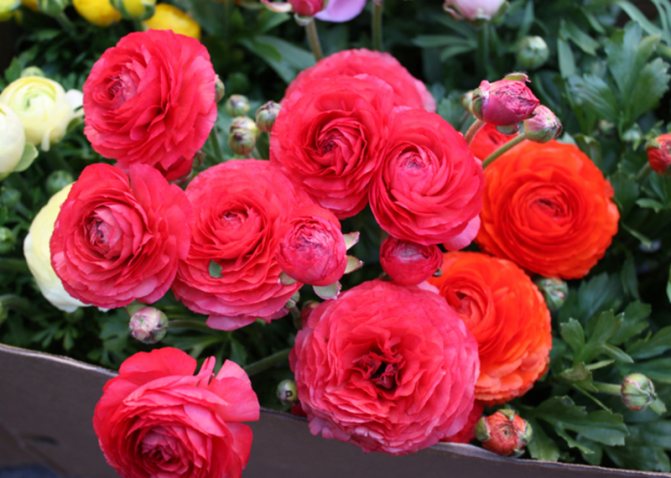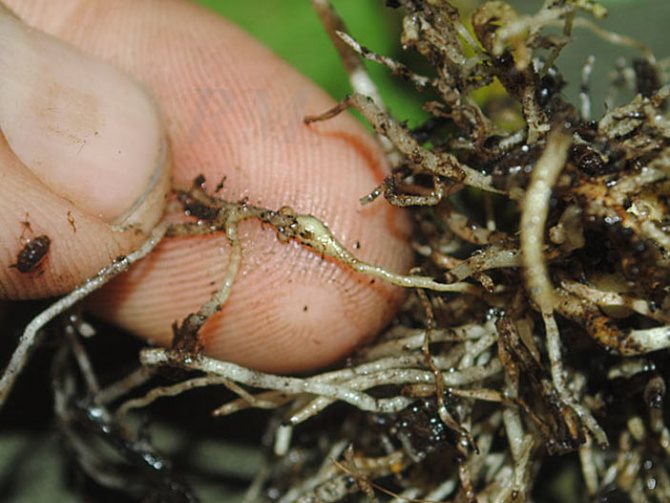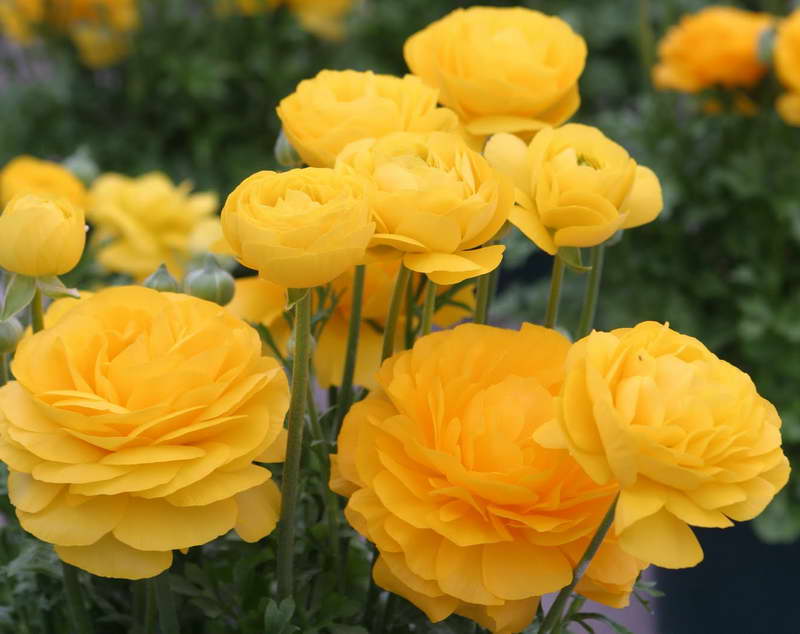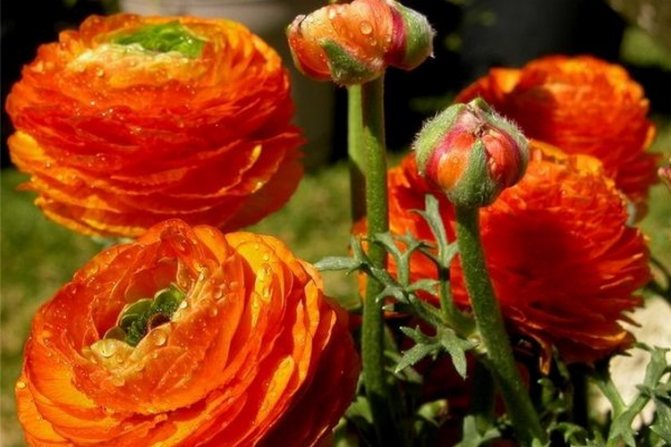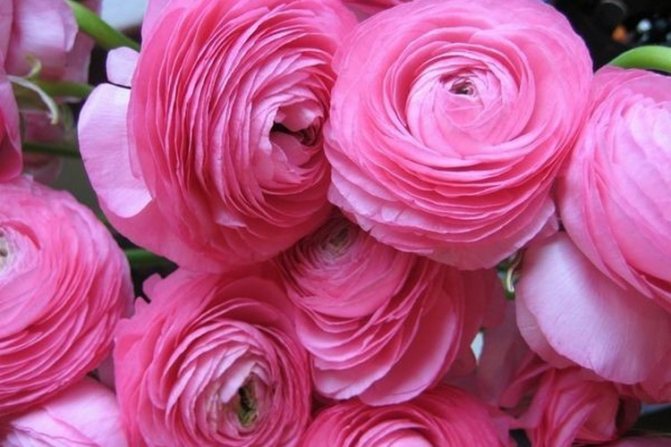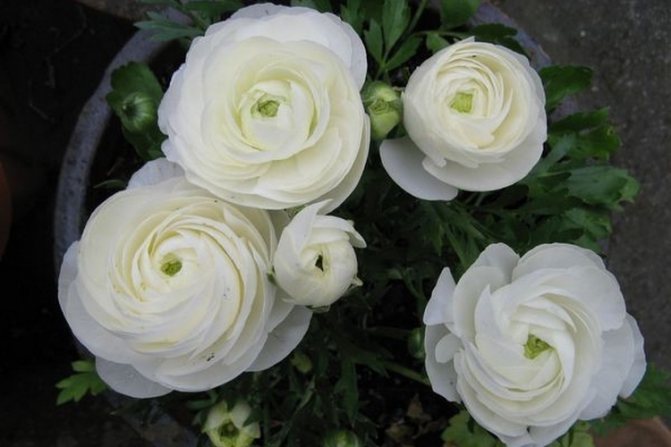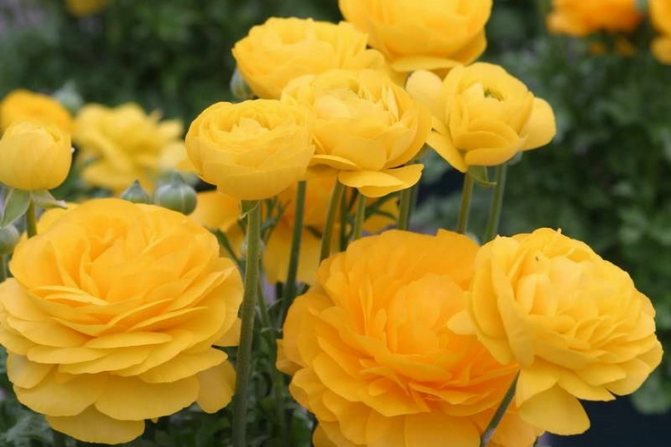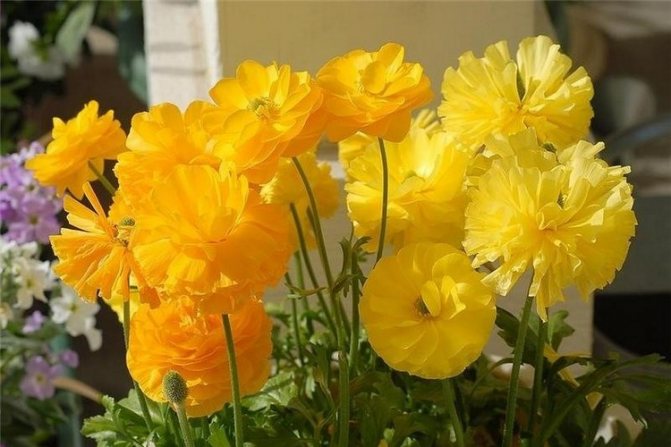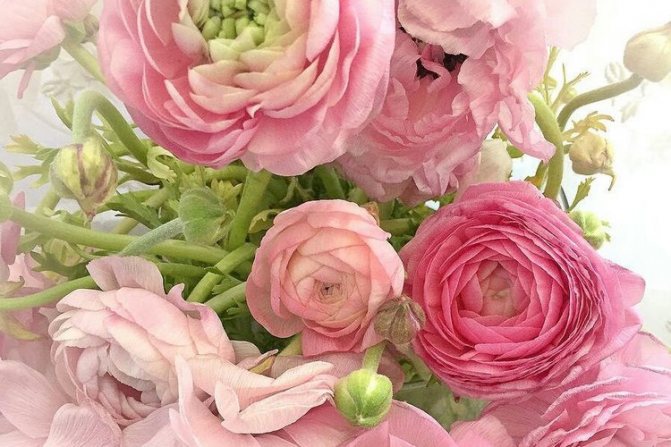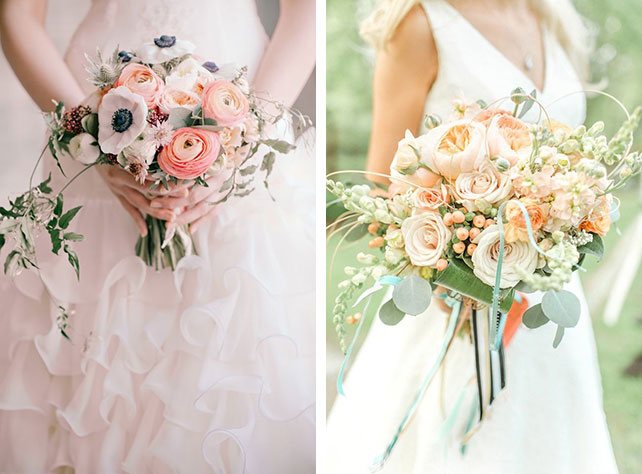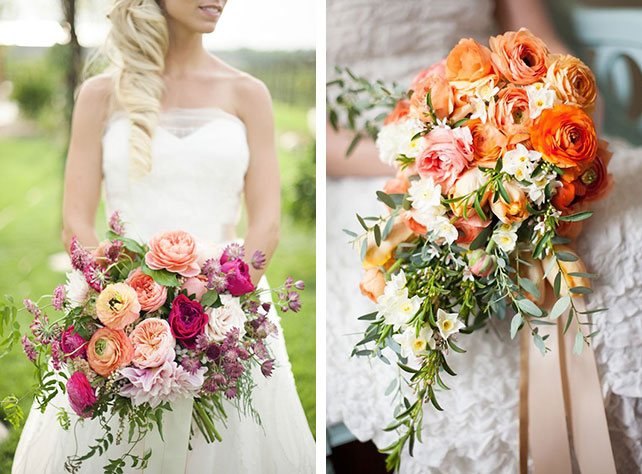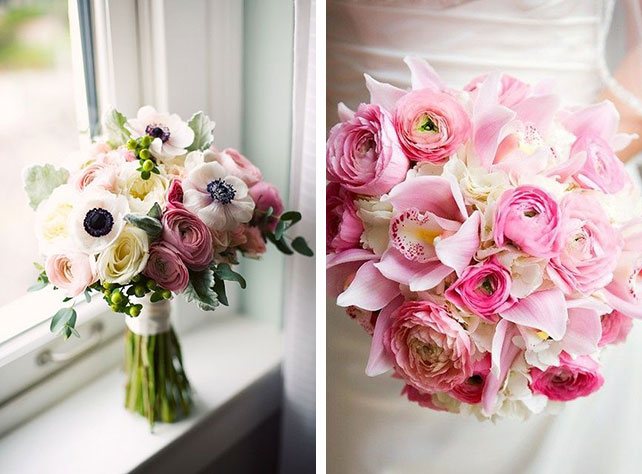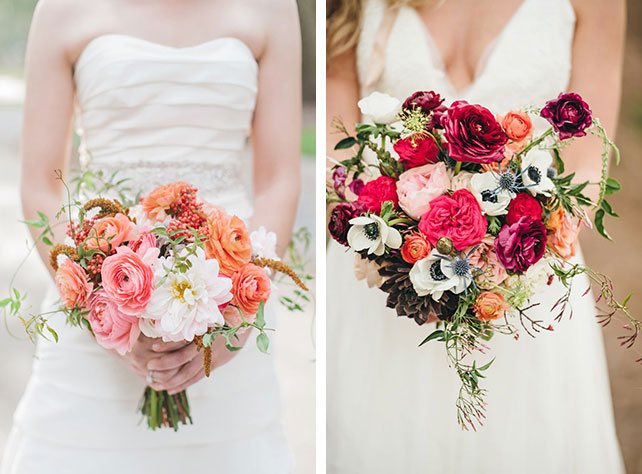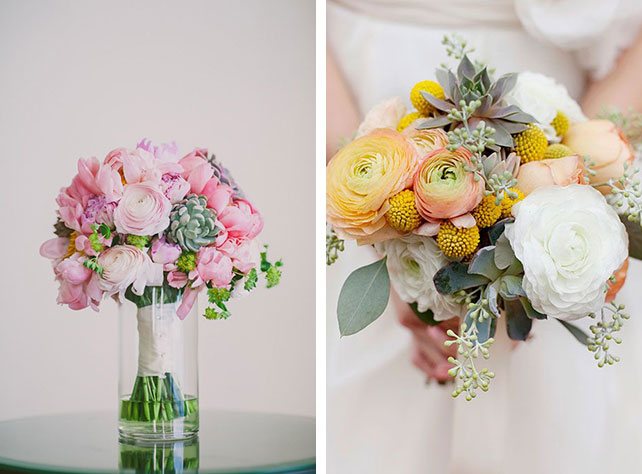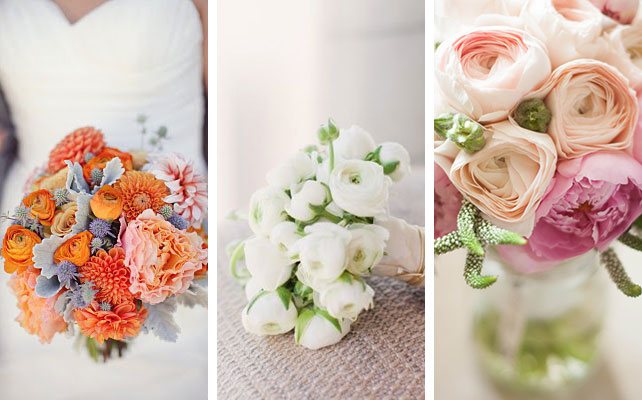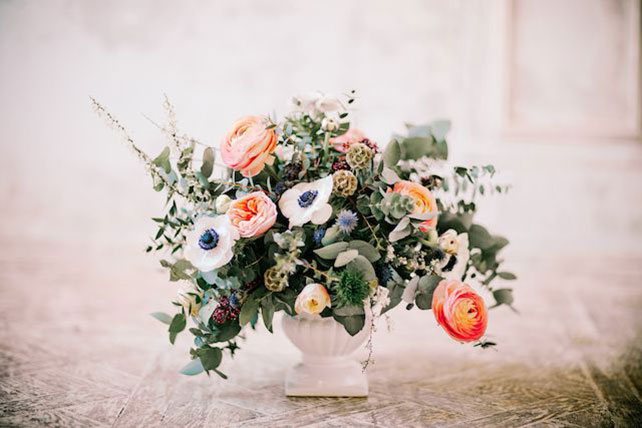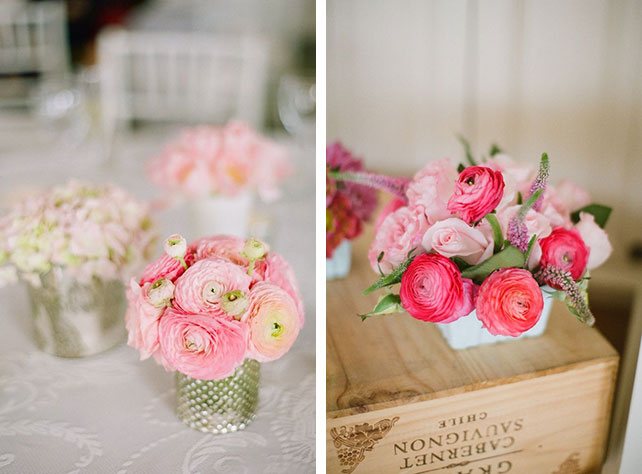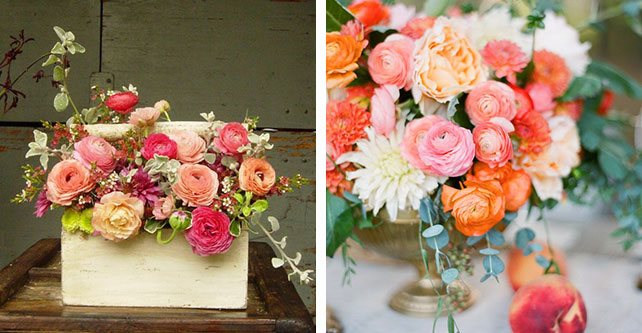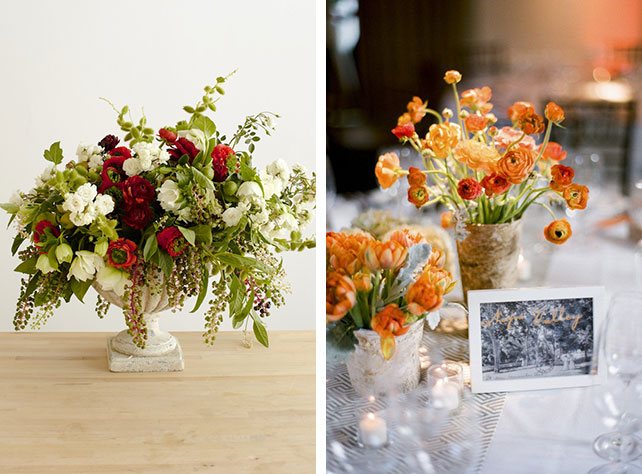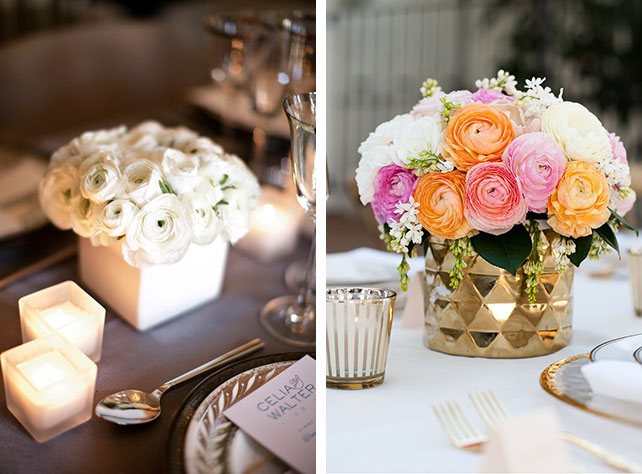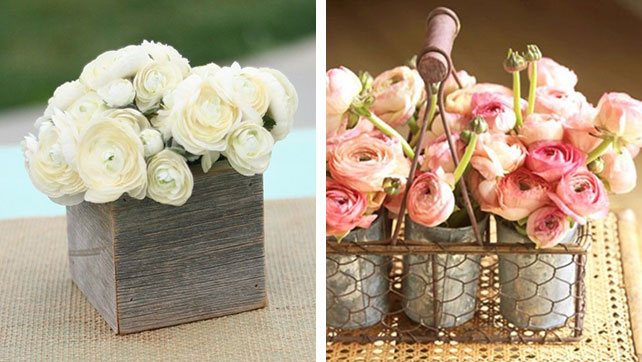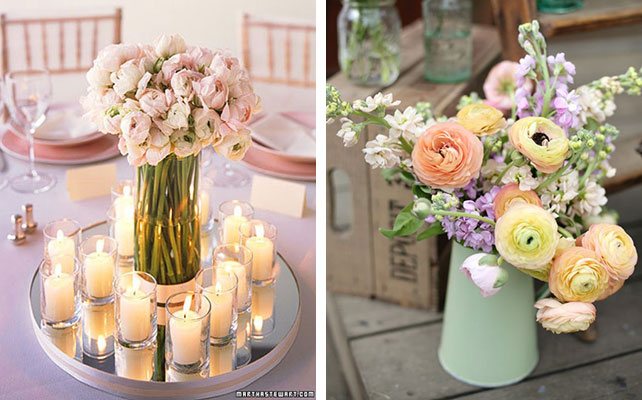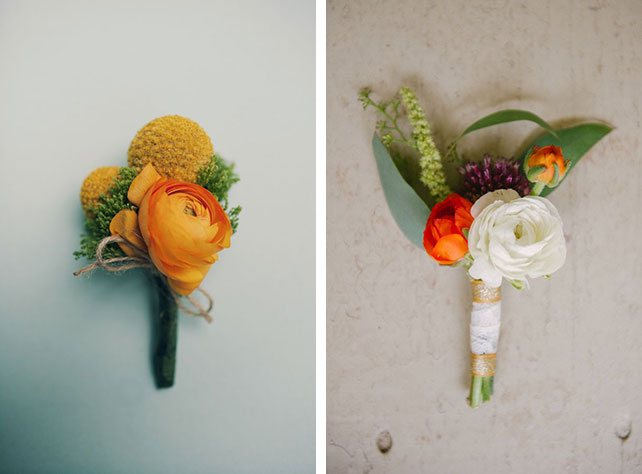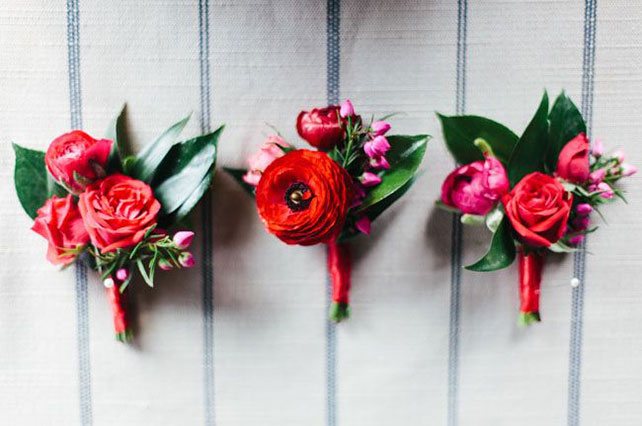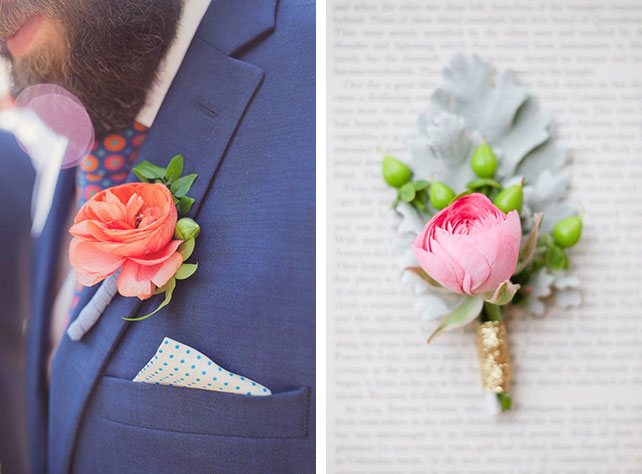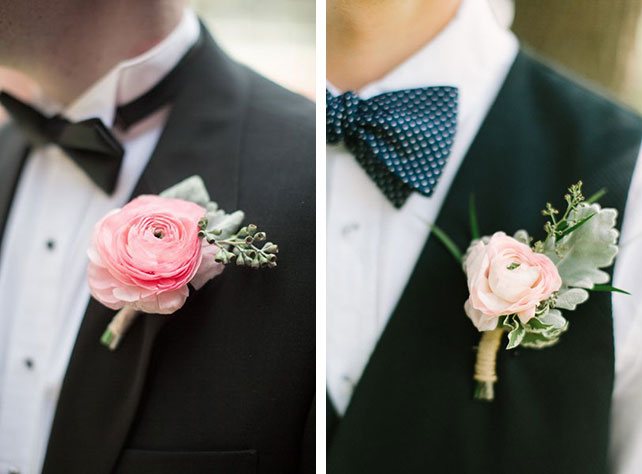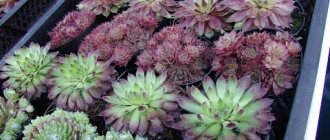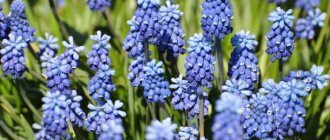Ranunculus (Latin Ranunculus), the middle name is Asian buttercup (garden). Ranunculus translated from Latin means "frog", this name was given by the ancient Greek scientist Pliny, apparently due to the fact that the plant prefers swampy areas. In Italy, the plant is called "the golden buttons of the meadows." According to legend, ranunculus are stars turned into flowers by Jesus to present to the mother as a sign of love and respect.
Ranunculus belongs to the Buttercup family. Asia Minor is considered the homeland. There are more than 600 plant species, but only Asian ranunculus with several varieties is cultivated.
Methods for growing ranunculus
There are two ways to grow Asiatic buttercup - from tubers and seeds. Let's consider the advantages and disadvantages of each of them.
Planting ranunculus tubers
The first batch of ranunculus tubers is put up for sale at the end of autumn. But you should not rush to buy, it is better to wait until February-March. The fact is that the tubers need to be stored at a temperature of 15-18 ° C and a humidity of no more than 60%. At home, it is not always possible to provide such storage parameters, otherwise the Asian buttercup becomes unviable and does not germinate at the right time.
In the first year after planting, ranunculus rarely bloom.
You can grow ranunculus through seedlings or immediately plant tubers in open ground. In the first case, they are planted in pots in late March - early April. The soil mixture should be very nutritious and contain sand, black soil and humus. Also, in pots, you need to organize good drainage. Before planting, ranunculus tubers are placed on a sponge, abundantly moistened with water. This procedure should be carried out for about 4-5 hours. If you are not completely sure of the ideal quality of the planting material, you can add a few crystals of potassium permanganate and a few drops of a growth stimulator to the water.
When planting directly into open ground (which should be carried out no earlier than mid-May), the same health-improving measures should be carried out with the bulbs (hold them in a solution of potassium permanganate or a growth stimulant). For planting, choose a place that is warm and sheltered from the wind, with sufficient sunlight during the day.
Each bulb must be buried 5-8 cm into the ground, with the sharp end pointing down. There should be at least 10 cm between the bulbs, since their root system grows rather quickly and actively. If the air temperature drops significantly or frosts return, young plantings are covered with a layer of straw or other covering material (just not with a film!) ..
Planting ranunculus seeds
The seed method of growing ranunculus is more laborious, time-consuming and does not always lead to the desired result. Seeds can be harvested in the summer from dead plants or purchased in a specialized store.
The sprouting rate of ranunculus sprouts is different, the most viable specimens appear first from the ground
Ranunculus seeds are very small and easily crumble to the ground. Therefore, it is best to wrap the buds with gauze and shake them slightly.
For seedlings, seeds are sown in January in pots or containers to a depth of about 2 cm.Use ordinary peat soil for flowers.Before the emergence of shoots, containers must be covered with plastic or glass to create greenhouse conditions. The temperature should be kept at 15-17 ° C and the soil should be regularly moistened with a spray bottle.
The germination of planting material is usually low. The slightest changes in temperature or waterlogging of the substrate can negate all your efforts.
If you nevertheless waited for tender sprouts to peck, you should rather install a phytolamp over them to provide young shoots with light. Watering should be moderate, no more than 1 time per week.
A pick is carried out in April, planting ranunculus in previously prepared beds. Lay a layer of pebbles or expanded clay and pieces of birch charcoal at the bottom of the planting holes to ensure drainage and protect the plant from over-watering. Cover the planting with straw or non-woven material every time it gets cold or cold.
Ranunculus flower
Ranunculus care
The main thing that the Asiatic buttercup needs is watering. At the same time, the root system of flowers is very sensitive to both excess moisture and dryness of the soil. Therefore, when watering, balance and check the moisture level of the soil. It should be slightly damp and gather in small lumps. On average, you need to water the ranunculus every 2-3 days. By the end of August, the intensity of watering should be reduced, increasing the intervals between waterings to 4-5 days.
In partial shade, the color of the flowers becomes pale and less bright
Remember to loosen the soil, especially after watering and rain. Ranunculus grows poorly on heavy, airtight soils. Fertilizers containing potassium salt, potassium sulfate and wood ash can be applied periodically. Before flowering, the plant needs potassium and limestone. Fertilizers Kemira Lux and Kemira Universal are considered universal fertilizers. On average, they are applied every two weeks.
Faded inflorescences should be removed to stimulate the growth of new ones. Towards the end of summer, it is advisable to cut the stem to the ground.
In the middle lane, ranunculus tubers are most often dug up for the winter. This should be done after the leaves of the plant die off.
When digging up the tubers, be extremely careful, they are very fragile and can be easily damaged.
Clean the dug tubers from the ground and remove the stems. You can immediately separate the children for planting next year. All tubers must be washed in clean water and soaked in a solution of potassium permanganate or Fitosporin for 20-30 minutes. Then they should be dried, wrapped in paper and stored in a cool, well-ventilated room with a temperature of about 5 ° C (basement or refrigerator). Tubers can be stored in dry sawdust or dry peat.
A bouquet of buttercups is considered one of the most beautiful
Ranunculus is a fairly hardy and disease and pest resistant plant that needs minimal maintenance. From its lush flowers, elegant bouquets are made, which amaze with the richness of shades. Set aside a little space for ranunculus in your summer cottage, and you will not regret it.
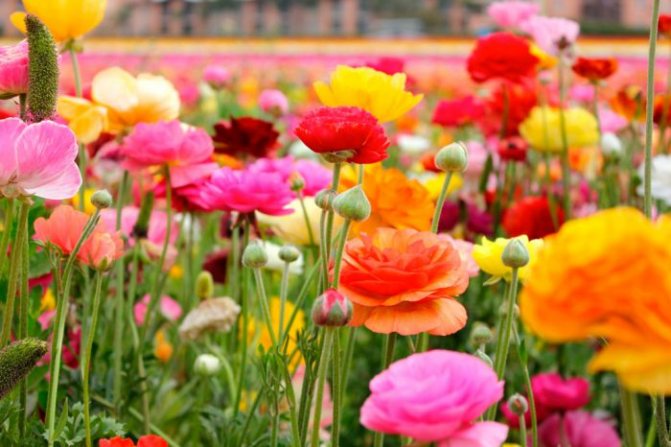
Ranunculus (Ranunculus) is also called the garden buttercup (Asian). The birthplace of such a plant belonging to the buttercup family is Asia Minor. The names of these flowers were given by the scientist Pliny, who lived in ancient times. From Latin ranunculus translates as "frog", the fact is that most species of such flowers prefer to grow in swampy places. In the 16th century, this plant was brought from Turkey to England and gained great popularity among flower growers there. However, since the end of the 19th century, it has lost its former popularity, but now these flowers are in increasing demand every year. At the moment, this genus unites more than 600 different species of ranunculus.If you cut a flower of such a plant and place it in a vase, then it will retain its freshness throughout the crescent. Italians call the garden buttercup "golden meadow buttons". There is a famous legend that Jesus turned small stars into buttercups and gave them to his mother as a sign of love and respect ...
Ranunculus description
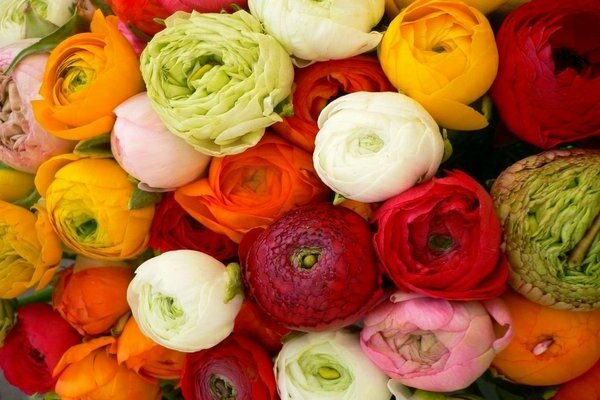

Ranunculus is a plant that also has a second name - the garden Asian buttercup. The homeland of ranunculus is Asia Minor, and the culture itself belongs to a rather extensive family of buttercups. This genus was popular, then lost its popularity. Today it is again at its best, since the plants in it are quite decorative and, at the same time, practically unpretentious when it comes to caring for them. Today the genus unites about 600 different species of ranunculus, some of them are actively cultivated by gardeners, but most of them generally remain not fully understood, and the properties of these plants are completely unknown.
If you cut a flower of this plant and place it in a vase of water, then it will retain not only its attractive and fresh appearance, but also its aroma for almost two weeks. The Italians gave this plant a nickname - the golden buttons of the meadows. These are really not the biggest plants that any gardener will remember, so they really deserve attention. In this article, we will talk in more detail about what features this plant has, about its characteristics. We will also highlight the subtleties of planting and caring for a plant at home. The article will be of interest to both experienced gardeners and inexperienced growers who are trying to find as many new crops and plant species as possible in order to expand their knowledge of cultures.
Features of ranunculus
The Asian ranunculus is a pretty showy flower. It is used to decorate apartments and gardens, growing on balconies, terraces and living quarters. The height of the bushes can vary from 20 to 80 centimeters. Deeply dissected leaf plates are located on strong shoots. Rhizomes are presented in the form of tubers, shaped like the legs of geese. The shoots of this flower, along with the roots and leaves, are very similar to the dahlia. Very showy flowers can be semi-double, double and densely double. They differ in a variety of colors, but blue and blue flowers are not found. Their diameter varies from 5 to 10 centimeters, and they bloom gradually from May to August. At the very beginning of their opening, the flowers are similar to roses. And after full disclosure, they are very similar to terry poppies. Very often, pink ranunculus and white ranunculus are used when drawing up a bride's bouquet. But at the same time, do not forget that the juice of such a plant is poisonous.
Gardeners and florists are engaged in the cultivation of various species and varieties of Asian ranunculus. He, in turn, originally had 2 varieties, namely: turban or African ranunculus (Ranunculus africanus), the flowers of which are similar to peonies, as well as Persian ranunculus (Ranunculus Persian), its inflorescences have a certain resemblance to a rose.
Buttercup ranunculus in garden and interior design
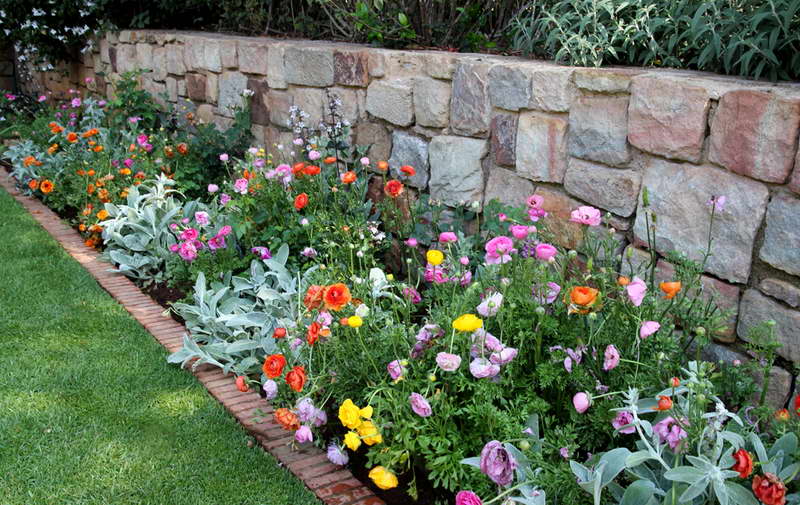

Ranunculus in landscape design photo
The flower can be grown in gardens and under indoor conditions, cut flower stalks delight in a vase for about 2 weeks. Ranunculus is very often used in wedding bouquets.
The combination of different colors will be a wonderful decoration for flower beds. Decorate the borders with bright buttercups.
Growing features
In order to grow beautiful flowers, you must adhere to certain rules in caring for them:
- While fertilizing the soil, you can burn the roots of the plant. In this regard, you need to opt for those fertilizers where vermicompost is available.
- The flower reacts extremely painfully to transplants, in this regard, it should be disturbed only if absolutely necessary.
- When a buttercup is in bloom, it needs limestone and potassium.
- To increase the duration of flowering, experienced growers advise to reduce watering and move the flower pot to a darkened place.
- When the leaf plates are completely dry, the plant's tubers must be dug up and stored for the winter, because the ranunculus is not frost-resistant.
- If you want to have a spectacular bouquet at home, then in one container you can plant several copies of such a plant at once, which will differ in the color of the flowers.
- Inflorescences that have begun to fade should be removed, in this case, new flowers will open faster. At the end of the summer period, the shoots must be cut to the ground.
The bride's bouquet
|
|
|
|
|
|
How to plant in open ground
How to prepare the ground
Buttercup (garden ranunculus) can grow and thrive quite well in a sunny location, but shade works best for it. The fact is that there, such a flower retains a more saturated color of the inflorescences, while the duration of flowering increases markedly. Also, the buttercup should be protected from the influence of drafts. Such a plant does not tolerate sub-zero temperatures, in this regard, it should be planted only after the threat of frost has passed.
The soil for ranunculus is most suitable for light, neutral acidity and rich in nutrients. So, it can be peat or humus mixed with black soil. But it is imperative to add chalk to it to neutralize. You cannot plant such a flower on a site with loam. Remember that the soil should perfectly absorb water during irrigation, but it should not linger in it for a long time. In order to avoid the formation of rot, plants need good drainage. To do this, add, for example, a small amount of sand to the bottom of the planting pit. Before planting a buttercup, you need to dig up the soil, while adding compost to it. And also to cultivate the soil with a foundation.
What time is the sowing of seeds
Growing buttercup from seeds is a rather difficult process, and all because they have a relatively low percentage of germination. Experienced gardeners are advised to collect seeds only from those flowers that have faded first. In order for the seeds not to spill out onto the surface of the soil, the inflorescences must be wrapped with gauze. Sowing should be done in mid-February. For this, a light substrate enriched with useful substances is used. After the seeds are sown, sprinkle them with a very thick (1.5 to 2 centimeters) layer of soil. On top of the container, you need to lay transparent glass or stretch the film. The container should be moved to a place with good lighting, where the temperature is within 15-17 degrees. If necessary, it is necessary to moisten the soil. The first seedlings should appear 14–20 days after sowing. When this happens, the cover should be removed from the container. When 2 pairs of true leaves grow, the ranunculus will need to be dived into individual pots. When the threat of frost passes in the spring, these flowers should be transplanted into the garden. Flowering will be observed only next year, so if you want to get a quick result, this method of reproduction of ranunculus is not suitable for you.
What time is the planting of tubers
After the soil warms up and the frosts are left behind, you will need to plant buttercup tubers in open ground. As a rule, this time falls on the last days of April, the first - in May. Planting tubers is not difficult, but there are rules and tricks that should not be forgotten. Before planting tubers, they must be prepared. To do this, they are laid out in well-moistened moss, sawdust or on a moistened sponge.The tubers should sit for several hours. The same effect can be achieved by soaking in cold water or in a weak solution of potassium manganese. In some cases, it is recommended to add a growth-promoting substance to the liquid. Choose the most suitable place for such a flower at once, since it is not recommended to transplant it.
It is necessary to lower the tuber into the prepared planting hole with the "beak" down to a depth of 5 to 8 centimeters. It is necessary to maintain a distance of 10 to 15 centimeters between plants. In the event that frosts are expected, then the plantings should be covered with straw or special covering material. After 2-3 months, several peduncles will grow on each bush, and flowering will begin after some time.
Table decoration
|
|
|
|
|
|
|
Features of care in open soil
Taking care of such a plant is quite simple. It is necessary to moderately systematically water the ranunculus, but at the same time make sure that the soil does not become waterlogged, as in this case rot may form. You can find out that the flower has begun to rot by looking at the mold on the leaf plates and by the buds falling off. The affected parts of the flower should be cut off, the soil around it must be loosened and watering must be reduced by all means. Timely need to remove faded flowers, as they will prevent the flowering of other inflorescences. This plant needs regular loosening of the soil, and it must also be fed using organic fertilizers. So, 2 times a month, potash fertilizer must be applied to the soil (per 1 square meter from 40 to 50 grams of the substance), and during flowering, potassium sulfate, potassium salt or wood ash are suitable for this. A spider mite can settle on a buttercup bush (especially during a summer drought). Thrips and aphids can settle on leaves and shoots. When you see whitish or silvery spots on the foliage, then immediately take measures to destroy the pests. For this, the bushes must be treated with suitable insecticidal agents. For preventive purposes, ranunculus should be treated with a solution of mercaptophos (0.2%) 2 or 3 times a week.
General description of the plant
Ranunculus is a perennial flowering plant of the buttercup family. There are Persian, turban, French and peony groups of these flowers. Groups, or species, differ in the number and shape of petals in the bud, the height of the stem, and the shape of the leaves.
During flowering, petals are of different colors: red, cream, yellow, white, pink. In terms of density, with and without fringes, they look like rosebuds or peonies. Flowering begins in mid-May or early June and can last until the first fall frost. With proper care, ranunculus can retain its flowers until the third decade of September.
The homeland of this plant is southeastern Europe., primarily the Balkan Peninsula, Asia Minor - Turkey, Crete, Rhodes, Carpathians. Another name for ranunculus is the Asian buttercup.
How to care at home
How to plant indoors
Taking care of buttercups growing on the balcony is also not difficult, as well as those that are grown in the garden. However, in order for the plant to grow and develop well, you should remember some rules and secrets. In indoor conditions, such a flower should not be grown as a single, therefore, it is recommended to plant several bushes in one pot at once. For planting, you can use both a decorative box and a fairly voluminous pot purchased at a store, in which there must be drainage holes on the bottom. For planting, you need exactly the same soil as in the garden, or rather, peat-based soil. The tubers should be immersed in water for 24 hours before planting.A good drainage layer should be laid on the bottom of the pot or box; expanded clay, crushed stone or egg shells are suitable for this. Then the earth is poured and nodules are laid out on its surface. They must be covered with soil in such a way that only the tops rise above the surface. With a sufficient volume of a flower pot, several nodules can be planted in it at once. Water well and remove for the first time in a cool enough place (about 12 degrees). Soil moistening should be carried out as necessary.
Reproduction of ranunculus nodules
Ranunculus nodules photo
Most often, ranunculus is propagated by nodules. Choose the largest ones with about 4 "marigolds". Overdried or soft tubers are not suitable for planting.
Before planting, nodules should be held in water at room temperature for 10 hours. Then they are planted in a permanent place or in a container for preliminary germination.
Pre-germination will allow for an earlier flowering of the Asiatic buttercup:
- Take a flat, wide container, fill it halfway with nutrient soil, spread the nodules, sprinkle with substrate on top and pour water over it.
- Place the container in a cool place out of the reach of rodents. Roots and first seedlings should appear in two weeks.
- Sprouted tubers are planted to a depth of 6-7 cm, the distance between the holes is 10-15 cm.
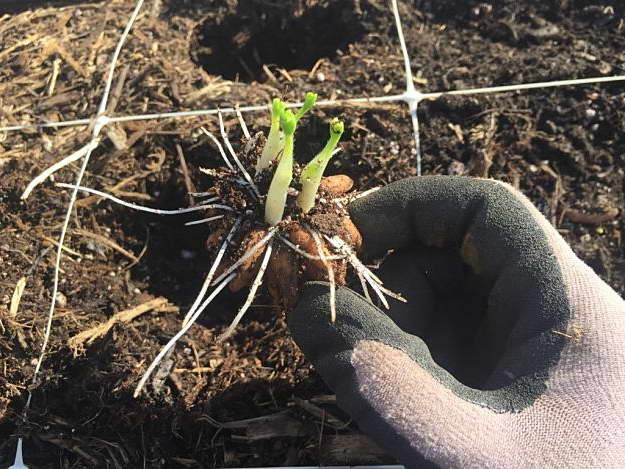

How to plant ranunculus photo
Remember: non-sprouted nodules are planted with "claws" down, the top is a flat "bottom", to which the "claws" are attached.
Ranunculus after flowering
How to dig up and store tubers of garden ranunculus
The tubers are dug up in autumn. After the shoots and foliage turn yellow and dry, they are cut off, and tubers are dug out of the soil. It should be remembered that the rhizomes of such a plant are quite delicate and can easily break, so they should be dug out carefully. Such a perennial can die at temperatures less than minus 7 degrees, in this regard, it is recommended to store the dug tubers in a basement with good ventilation, where the temperature should be at a level of 4 to 6 degrees. In this case, the tubers must be wrapped with dry moss or put in a paper bag. Before removing the nodules for storage, they are processed in the foundation for half an hour, and after that they are allowed to dry well in a shaded place for about 3 days. Such a perennial plant in places with mild winters does not need to be dug out, they are simply covered with fallen leaves or spruce branches.
Caring for indoor ranunculus after flowering
After the ranunculus has faded, it must be removed to a shaded and cool enough place. The flower will grow for some time, and then it will have a dormant period, while the shoots and foliage will turn yellow and dry out. Transplant the flower into fresh substrate and transfer it to a place with a temperature of 15 to 18 degrees. The duration of the dormant period is about 4 weeks; young sprouts will appear already in April. During the period of intensive growth, each nodule has from 5 to 7 young shoots. They are dug up and carefully separated. Then the tubers can be planted in individual pots, or they can be stored until spring on a refrigerator shelf in the vegetable section or in the basement. It must be remembered that weaker plants grow from such "preserved" nodules and their flower diameter is comparatively smaller. Most inexperienced growers therefore acquire fresh nodules every year.
Ranunculus (buttercup) has recently become popular in home gardens. These flowers look very much like roses, peonies or even chrysanthemums. The flowers are so beautiful that they are often used for wedding bouquets.
There are two ways to grow ranunculus: plant with seeds or tubers, while you can plant the tubers directly in open ground. Next, let's talk in more detail about the features of each of the methods, as well as about further caring for the flower in the garden or in the flower garden.
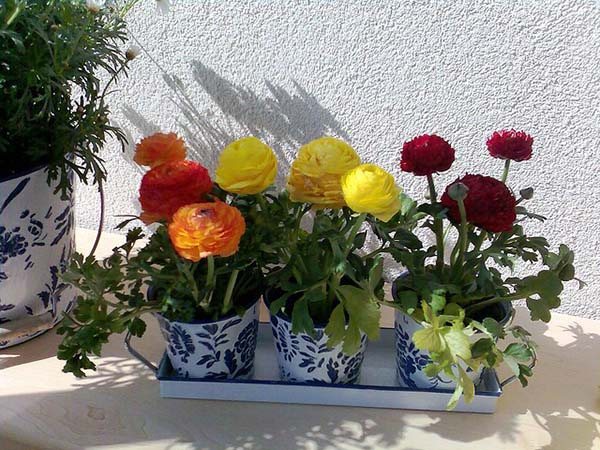

Boutonnieres
|
|
|
|
|
Planting ranunculus tubers for seedlings - with germination at home
You can grow ranunculus tubers either by first planting on seedlings, or by immediately planting "octopuses" in open ground. But this must necessarily be preceded by the choice of the optimal timing, soil and correct pre-planting preparation.
When to plant tubers: timing
Many people recommend planting ranunculus tubers from February. But this is wrong, because it is not always possible to organize sufficient daylight hours for the plants, and on an ordinary window sill, under natural conditions, they will inevitably stretch out. In addition, if we can go out the same tomatoes or peppers, and they quickly gain green mass and subsequently bear fruit normally even elongated specimens, then the delicate flowers of buttercups will not be able to do this. If the seedlings stretch out, then the bloom will be frankly bad.
Therefore, the optimal time for planting ranunculus tubers for seedlings at home is the second half of March - early April.
According to the lunar calendar in 2019
Choosing the optimal date for planting tubers can help you Moon calendar.
Important! Planting ranunculus tubers both in a pot (for germination at home) and in open ground is recommended in accordance with the lunar calendar.
So favorable days for planting ranunculus tubers in 2019 according to the lunar calendar are:
- in February - 15-17, 23-25;
- in March - 12-17, 22-25;
- in April - 6-8, 20-26, 29, 30;
- in May - 6-8, 14-17, 21-23, 31;
- in June - 1, 2, 9-11.
Unfavorable days on the lunar calendar for 2019 for planting ranunculus tubers the following dates are:
- in February - 4, 5, 19;
- in March - 6, 7, 21;
- in April - 5, 19;
- in May - 5, 19;
- in June - 3, 4, 17.
According to the lunar calendar from the magazine "1000 Tips for the Summer Resident".
Container and soil mixture
It is advisable to plant buttercups tubers in separate small pots or individual cups.
Land for growing buttercup seedlings needs light and breathable enough. If you take clay (from lowland peat), in other words, dense, then it will be very difficult for the plant to take nutrients and germinate successfully.
It is advisable to prepare the soil for planting ranunculus from black soil and humus, adding a little sand. Do not forget to make a working drainage in the containers.
Preparing tubers for planting: soaking
Place a tissue or rag in the container (you can use a sponge). Further, slightly wet it with a solution of some fungicide ("Maxim Dachnik" or "Fitosporin") or a growth stimulant ("Zircon", "Epin" or "Energen"). Then put the ranunculus nodules on it and cover with a dry napkin or rag. It is recommended to cover the container itself with a transparent film. As soon as the tubers swell, you can pull them out. This usually takes 1 to 3 hours.
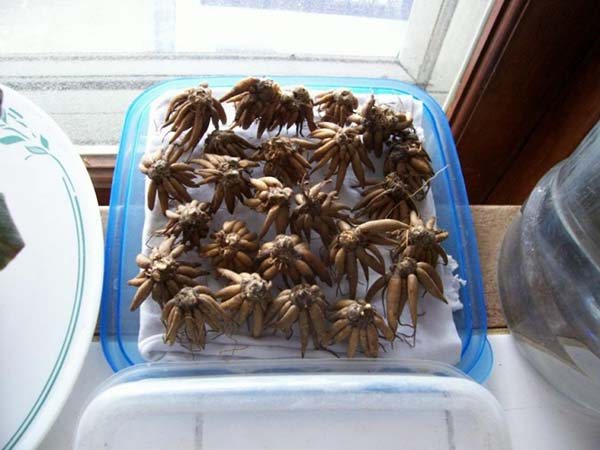

By the way! Another very interesting way. Pour some earth on the bottom of the container (for example, for roses). The soil is needed here as a substrate that retains moisture and has a slight stimulating effect. Moisturize well and put the nodules (on the legs) on this ground. Spray again and cover with plastic wrap as well.
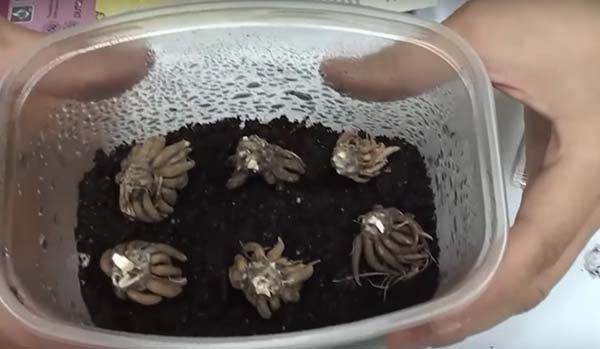

Important! In no case should the buttercup tubers be completely soaked in water: they should not float in it. Moreover, if they swim, and not sink, then this means that the tubers are too dry and will hardly sprout.
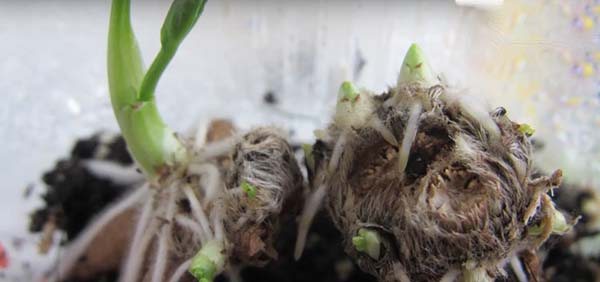

As soon as the first shoots of the roots appear, then the tubers of ranunculus can begin to be planted.
Video: how to grow ranunculus
Planting tubers
Some gardeners, on the other hand, recommend not soaking ranunculus tubers before planting. they tend to rot very quickly and be affected by fungal diseases, and immediately plant them in planting containers.
The tubers are planted to the depth of their height, that is, only the top of the ranunculus should remain at the top (tentacles down!), And then covered with earth by 2-3 centimeters and sprayed, preferably with water with the addition Fitosporin (this is to combat fungal diseases, and to stimulate growth).
Video: planting ranunculus tubers
Seedling care after planting
The main condition for the successful cultivation of ranunculus seedlings is a low temperature (somewhere around + 16-18 C). From dry air and temperatures of +25 C degrees, the plants will wither.
Diseases and pests
Basically, all diseases of the garden buttercup arise from improper care. The most common reason is too waterlogged soil. From this, the roots begin to rot, flower buds fall off and powdery mildew appears.
In the fight against powdery mildew, various insecticidal solutions and aerosols will help. So that water does not stagnate in the soil, it is necessary to take care of drainage during planting and do not forget about loosening the soil. Sometimes the usual drying of the soil can save a wilting plant.
Excessive watering is indicated by the appearance of mold on the leafy part of the plant. In this case, you need to completely abandon watering for a while. The soil will dry out a little, and the flower will again delight with its flowering.
The most common pests in the garden buttercup are spider mites and nematodes.
Signs of a mite are spots on the leaves (silvery or yellow). In this case, urgent treatment with special drugs is needed.
Signs of the appearance of a nematode are leaves curling into tubes, slow plant growth. The roots of such plants urgently need manganese treatment. It is enough to rinse the roots of the plant extracted from the ground in a pink solution and the pest will die.
Planting ranunculus tubers directly into open ground
The optimal time for planting ranunculus tubers directly into open ground, as in the case of growing seedlings, is the second half of May, when the soil warms up to +10 C degrees.
Before planting with bulbs, it is imperative to carry out a soaking procedure.
Everything has already been said about the place and soil. But again, this should be a sufficiently illuminated, wind-protected and fertile area of your garden.
It is good to plant tubers after rain, just the soil will be sufficiently moistened.
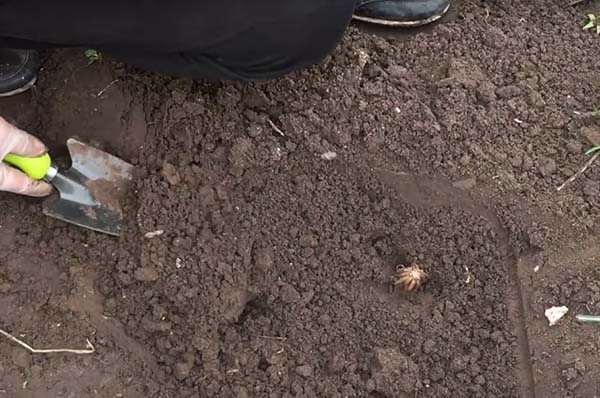

You need to plant the bulb at three heights, that is, about 5-6 centimeters, with the sharp end down. The distance between tubers should be about 10-15 centimeters. It is this distance that will ensure the normal development of their root system.
If you plant the bulbs early enough, and there is a possibility of recurrent frost, then it is recommended to cover the planting with straw or some other covering material that would allow oxygen to pass through well (therefore, plastic wrap will not work).
Advice! After disembarking (if you do not cover), be sure to mark the place, otherwise you may simply lose it.
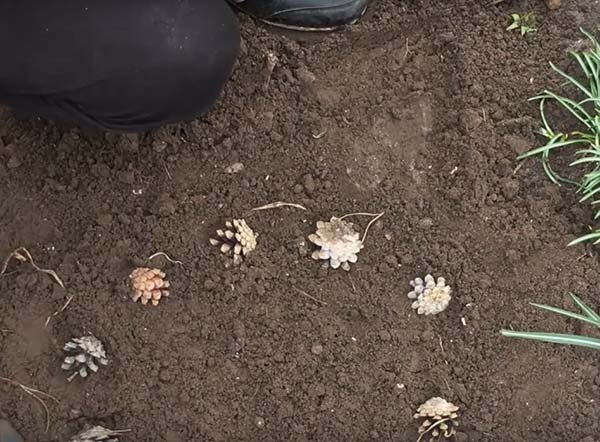

Buttercups flowers in landscape design
Garden buttercups are a unique decoration in a flower bed, garden plot, lawn or in a flower pot. Its multi-colored palette allows you to create extraordinarily beautiful flower arrangements. This plant goes well with various plant crops.
This flower is readily used in their work by landscape designers and bouquets, florists and decorators of special occasions.
Growing ranunculus from seeds
It is possible to grow ranunculus through planting seeds, but this is much more difficult.
You can get seed both from faded flowers in late summer and early autumn, and you can buy it in the garden center.
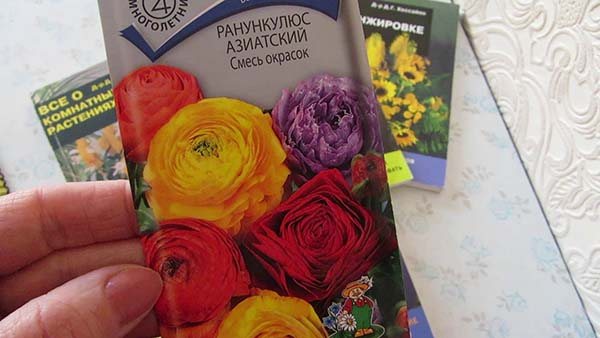

Seed sowing dates
It is necessary to plant buttercup seeds for seedlings earlier than usual. As a rule, this is done already in January or February. Some gardeners recommend postponing planting until March, especially if you do not have the opportunity to light up the crops.
Capacity and soil
As a container, you can use the most common pots or containers.
The soil mixture for growing ranunculus seedlings should be loose with the addition of perlite or vermiculite. In other words, you can use ordinary peat soil for flower seedlings as a base.
A mixture of leafy earth, peat and sand in a ratio of 1: 1: 0.5 is also suitable.
At the end of the soil preparation procedure, do not forget to pass it through a sieve. And then roast in the oven or steam in the microwave as a disinfection method.
Sowing seeds
Step-by-step instructions for planting ranunculus seeds for seedlings:
- Fill containers with potting soil, level and compact a little.
- We moisten the soil from a spray bottle with water with the addition of Epin (4-6 drops per 1 liter of water).
- We spread the seeds over the soil surface.
- Sprinkle with a very light layer of earth.
- Gently spray the plantings with warm and settled water with vermicompost for seedlings.
- It remains to close the planting container with a lid, cover it with a bag (shoe cover) and put it in a cool enough place, where the temperature is no more than + 10-15 C degrees, for 5 days. And then transfer the container to a warmer place where the temperature reaches + 25 C degrees or even within + 20-30 C.
Video: planting ranunculus seeds
Care after planting seeds
Unfortunately, the germination of buttercups planting material, frankly, is low. If you fail to control the temperature regime or you overflow the soil, then the seedlings may not appear at all.
As soon as the very first sprouts appear, hurry up to place the containers with buttercups under artificial lighting. This will greatly increase the likelihood of successfully growing ranunculus seedlings through seed.
Now you should maintain a lower temperature, somewhere on the order of + 15-17 C degrees.
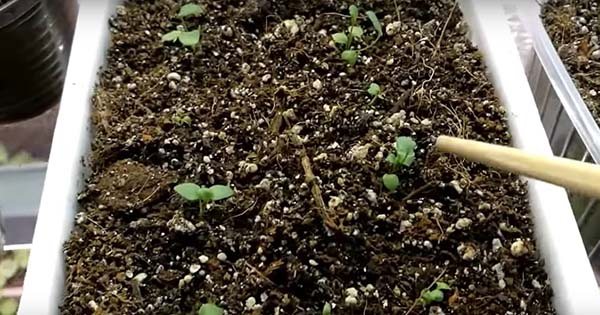

As for caring for young buttercup seedlings, the most important thing is regular, but moderate watering.
The timing and procedure for planting buttercup seedlings in open ground completely coincides with planting seedlings grown from tubers.
Video: growing ranunculus from seeds
Reproduction of buttercups
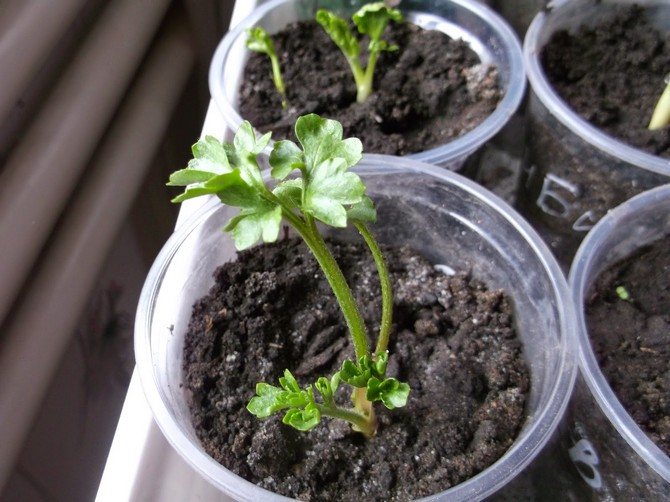

The most popular and uncomplicated way to propagate a garden buttercup is to split the root. This method allows you to get several young bushes at once.
The seed propagation method is used extremely rarely due to the low germination of seeds. First, the seeds are sown in large planting boxes (in the last winter days) in a soil mixture consisting of peat, sand and garden soil to a depth of no more than 2 centimeters. For fifteen days, containers are kept at a temperature of 10 to 15 degrees, maintaining constant soil moisture.
The first shoots should appear in about 25-30 days. Their appearance is the time when the boxes are transferred to a warm room (more than 20 degrees). Now young seedlings need a lot of light and warmth. If necessary, you can supplement the illumination of plants with additional lighting.
Garden buttercup seedlings can only be transferred to the garden plot during the last week of May or early June. The plant grown in this way does not bloom in the first year.
Outdoor ranunculus care
Regular and balanced watering is mostly all you need to properly care for your ranunculus.
The flower does not like either excess moisture or excessive dryness of the soil, therefore it is necessary to regularly check the moisture content of the earth. Watering frequency is about 1 time in 2-3 days.In late summer and early autumn, watering should be gradually reduced to 4-5 days.
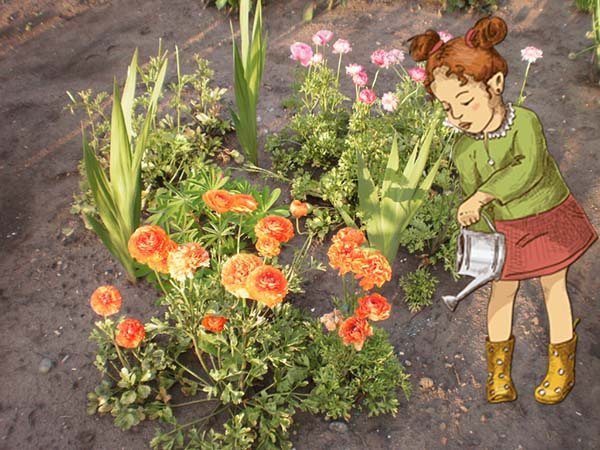

Do not forget about loosening and feeding. It is necessary to loosen the soil in order after each watering and heavy rain. This requirement is due to the fact that it is very difficult for a plant to grow on heavy and clayey soils.
It is periodically recommended to feed the ranunculus with fertilizers, which include potassium salt and potassium sulfate, and you can also use wood ash. Before flowering, you should feed it with potassium and limestone.
This plant responds very well to organic feeding, for example, humus or vermicompost.
Important! Remember, you cannot use fresh manure, as it is a very powerful remedy that can simply burn the root system of a plant. In addition, it is a serious threat to the occurrence of fungal diseases.
As a universal remedy for feeding ranunculus, you can use drugs such as Kemira Lux and Universal. Fertilize the plant, preferably once every 2 weeks.
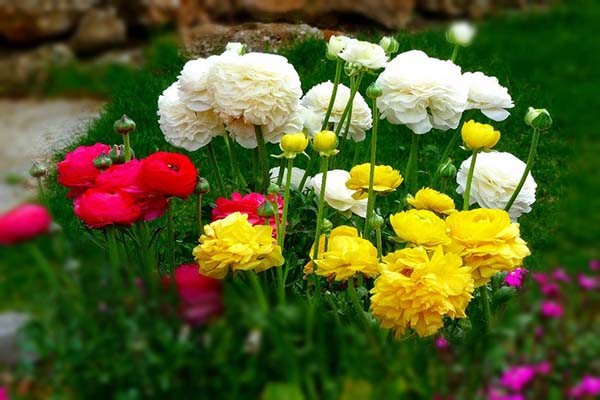

Ranunculus blooms literally from the beginning of summer to autumn, depending on the method of planting and growing, forming an unusually beautiful ball of very delicate buttercups.
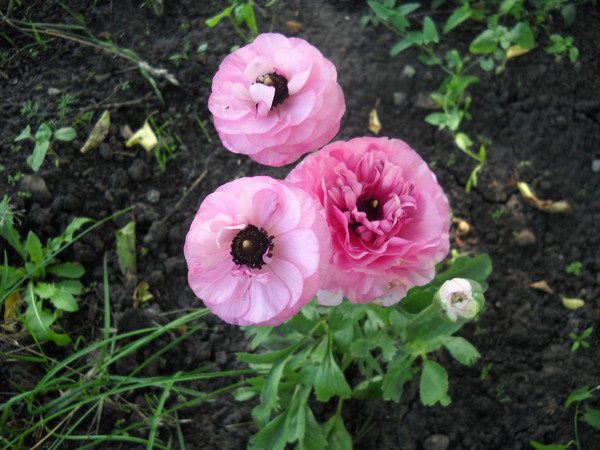

To stimulate the growth of new flowers, it is necessary to cut off the faded inflorescences. And at the end of summer, it is recommended to completely cut the stems down to the base.
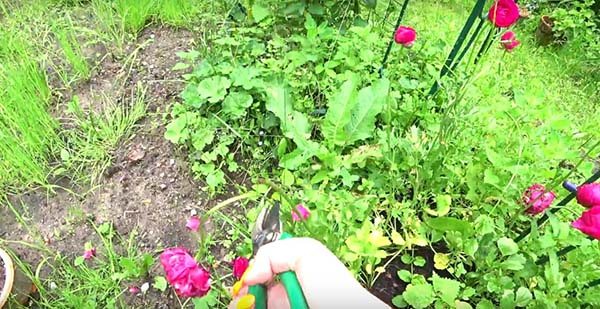

Video: caring for ranunculus in the garden
By the way! In the fall, before the onset of cold weather, you can dig up the ranunculus and transplant it into a pot or planter. This way you can grow it like a houseplant.
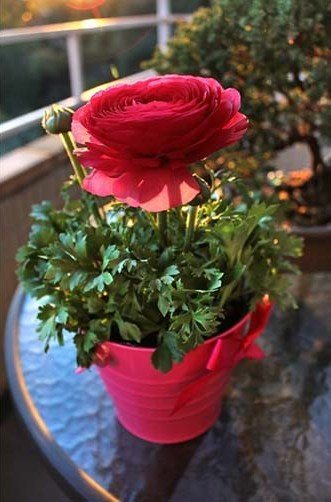

When to dig up and how to store tubers
As a rule, in the Middle Lane (Moscow region), when all the leaves of the ranunculus wither and dry out, that is, in the fall, buttercup tubers are dug out of the ground in order to save for the winter.
Note! Be very careful when digging up the tubers. They are very delicate, so they can be accidentally touched and injured.
After you dig up the tubers, it will be necessary to clear them of the soil. Then cut off all the stems, rinse again in water and soak in the Maxim Sad solution or Fitosporin for half an hour to disinfect and protect against fungal diseases. Now they will only have to be dried and put away in a paper bag for storage in a fairly cool room, where the temperature is kept at an average of +5 C degrees. This can be a basement or cellar, as well as a refrigerator.
Video: when to dig up and how to store ranunculus
Thus, there are several ways to grow ranunculus. Which one you choose is up to you. We can only advise planting buttercup tubers for seedlings first, since the likelihood of a successful cultivation will be the greatest. Further care for ranunculus in the open ground cannot be called difficult, even a novice florist can handle it. The main thing is to approach it with the greatest responsibility to plant and care for young seedlings.
Video: care and planting of ranunculus - features of growing at home
Popular species and varieties
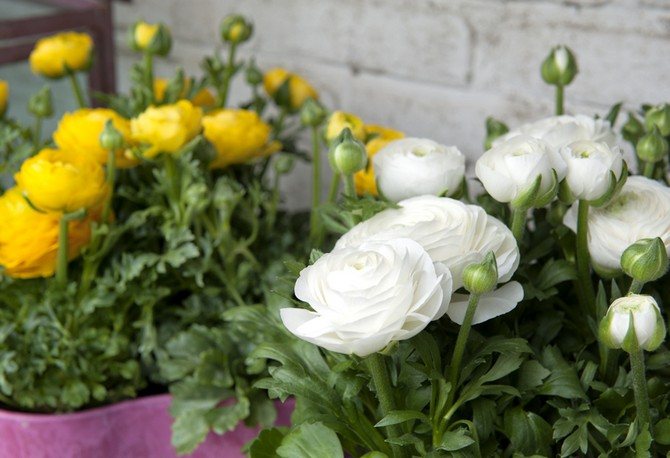

- Asiatic buttercup - this variety is distinguished by its beautiful double flowers, which bear a great resemblance to roses. The shrub grows to about forty centimeters in height.
- African buttercup - this variety is very similar to a peony. Its distinctive features are flower petals, which, as it were, are wrapped inward and bright green leaves of large size.
- Pungent buttercup - This species is often found in the wild, prefers moist meadow or forest soils and partial shade areas. The plant is frost-resistant and has medicinal properties. Active flowering begins in early summer, the flowers are golden-yellow in color.
- Aconitol buttercup - This species is distinguished by flowering white or yellow. The shrub reaches a height of almost 80 centimeters.
- Anemoliferous buttercup - This is a low-growing bush plant (no more than 30 centimeters in height).
- Multi-flowered buttercup - This perennial type of shrub blooms throughout the summer, medium in height (about half a meter), blooms with shiny yellow flowers.
Garden buttercups retain their decorative properties for 3-4 years, after which it is advisable to update the varieties.
Storage of ranunculus in winter.
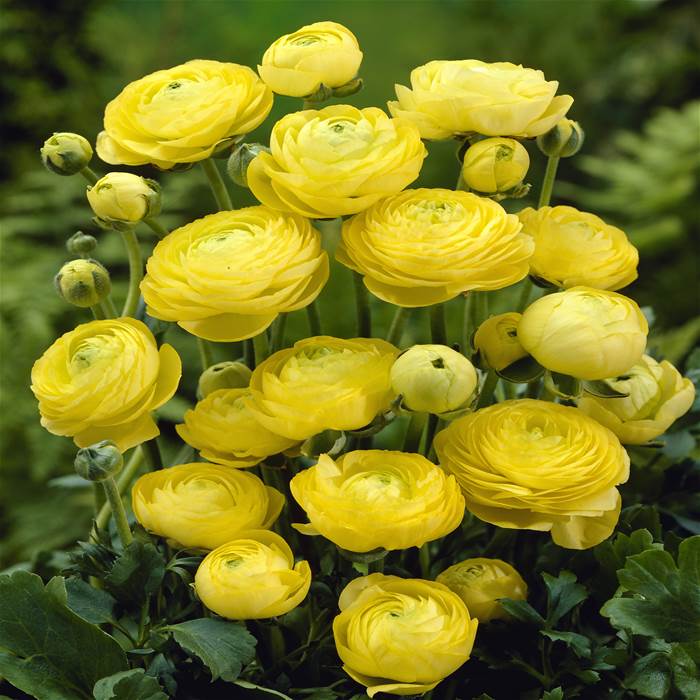

Ranunculus yellow photo
The tubers are dug up in August, after the leaves turn yellow, the stems are cut off. It is necessary to clear all the soil and separate the children. Before bookmarking on winter storage at ranunculus the tubers are treated with anti-rot preparations. To do this, use Maxim. After that, the tubers are laid out in one layer and completely dried at room (about 20 ° C) temperature.
Ranunculus storage in winter it will be better if you put the tubers in sawdust, dry peat or moss and store at a low temperature (+3 + 7 ° C) in the basement or vegetable compartment of the refrigerator.
However, tubers are kept at room temperature. Fully dried tubers are wrapped in paper and then in a plastic bag.
2. Varieties:
2.1. Asian ranunculus - Ranunculus asiaticus
Attractive flowering bulbous perennials 30 - 60 cm high with erect shoots and dark green, glossy, carved leaves, reminiscent of parsley. The flowers are wide open, cupped, resemble a poppy, the size of the flower reaches 5 cm, can be painted in yellow, pink, red, white shades. Anthers are black.
↑ Upward,
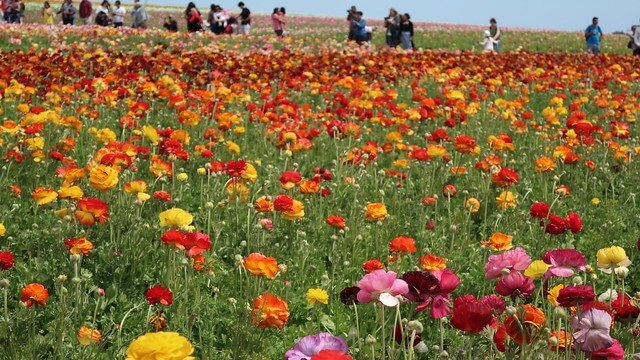

2.2 Ranunculus Persian - Ranunculus Persian
A variety of the Asiatic buttercup often found in flower culture. Depending on the specific variety, the height of the plant can vary from 25 to 60 cm. Plants of this species have simply huge, double flowers with many rounded, thin petals. In diameter, the flowers can reach 15 cm. The shades of flowers are often delicate, pastel, in a very diverse range of colors, except perhaps only black and blue shades.
↑ Upward,
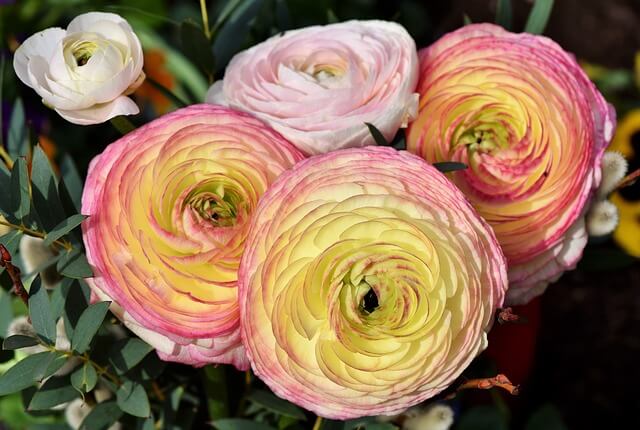

2.3 Ranunculus bulbosus - Ranunculus bulbosus
A flowering perennial herb with a height of 10 to 30 cm. Bushes have thin, erect stems and dark green, carved, complex leaves on long and thin petioles. Leaves can consist of several segments and are arranged in succession. The flowers are solitary, golden yellow, cupped, with rounded, wide, glossy petals, reaching a diameter of 1.5 - 3 cm. This variety is often found in gardens as a weed.
The ground parts of this plant are used in homeopathy for the treatment of shingles, intercostal neuralgia, rheumatism and diseases of the upper respiratory tract, and relief of epileptic seizures.
↑ Upward,
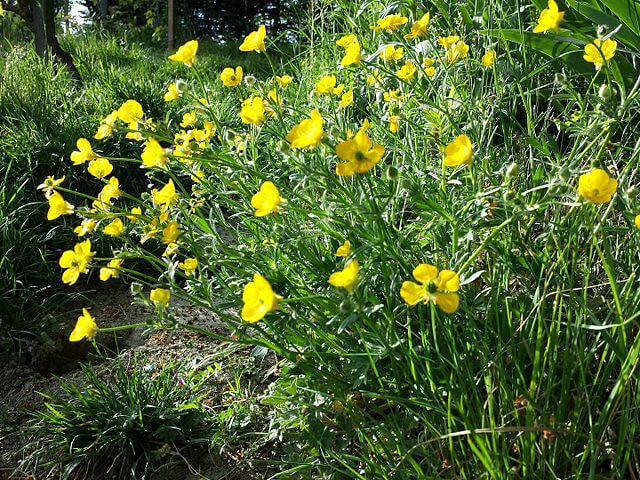

2.4. Ranunculus creeping or repens - Ranunculus repens
Small plants, reaching a maximum height of about 30 cm. Plants have lodging, thin stems and are able to form dense grassy mats over time. Leaves are glossy, dark green compound - consist of three toothed segments. Peduncles are abundantly covered with silvery pubescence. The flowers are golden yellow, about 2.5 cm in diameter, appear on plants in May and almost until frost.
↑ Upward,
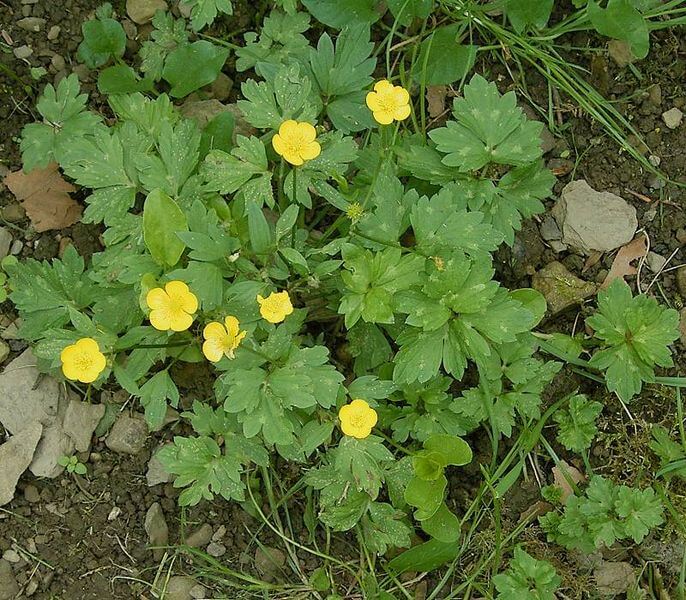

Frequent problems in the process of growing ranunculus
In order for this luxurious plant to please with lush flowering and healthy growth for as long as possible, you should heed a number of recommendations from professional florists:
- The plant is not particularly prone to transplanting, and the frequent change of the pot negatively affects its decorative qualities. Despite this, soil replacement is necessary every 3 years.
- During flowering, fertilizing with the inclusion of biohumus is required. Otherwise, the plant may burn out and dry out.
- For the recharge period, the ranunculus is rearranged in the shade and watering is minimized. This technique helps to prolong flowering.
- Due to the excessive fragility of tubers, all actions with them are performed with extreme caution.
- The condition of the rhizome is monitored and, with strong growth, the "children" are separated, followed by their seeding in separate containers.
The roots are especially sensitive in the first weeks after planting: they are prone to dehydration and are prone to various pathologies. Therefore, it is necessary to strictly adhere to the basic agrotechnical care measures.
Preparing ranunculus for winter
With the onset of autumn, the tubers must be dug up. Do this as soon as the leaves turn yellow and dry. Cut the stems. Be very careful with tubers - they are fragile, they can break with careless movements. Dug up tubers about 30 min. hold it in the foundation solution, then dry it in a shaded place for 3 days. Wrap the nodules in a paper bag or dry moss, store until spring in a cool place (temperature 4-6º C) with good ventilation.
If in your area the air temperature does not drop below -7º C in winter, ranunculus tubers can be left to winter outdoors, but be sure to cover them with foliage or spruce branches.
1 planting and care
1.1 How to grow ranunculus outdoors
How to plant ranunculus correctly? When grown outdoors, in a garden, a place is selected for a flower that will be protected from direct sunlight during the daytime and strong winds.
Landing spend only in the beginning of Maywhen the threat of return frosts has passed. To neutralize the acidity of the soil, you can add crushed chalk or spill it with lime milk.
At the bottom of each planting hole, first of all, a drainage layer is placed in the form of fine expanded clay, fragments of brick or river sand.
Tubers - ranunculus bulbs before planting soak for disinfection in weak solution potassium permanganate for several hours, and the solution should not completely cover the tubers, but can only reach only half of their height. Such measures are due to the fact that the tubers must always breathe, and completely covered. water they can suffocate without oxygen.
Rooting powder can be added to the solution, but this is not required.
↑ Upward,
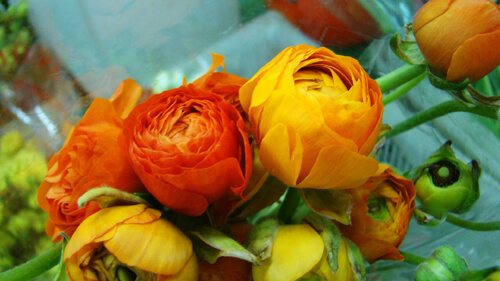

After soaking, the tubers are immediately planted, preventing them from drying out. For germination of tubers soil temperature must be not less than 10 ° C.
Ranunculus tubers look like octopuses - from below they have tentacles, and from above - a growth point, respectively, they are planted in the ground with tentacles down.
Plants are planted on depth about 5 - 8 cm., covering from above with soil mixed with sand for looseness and better outflow of moisture. The planting depth can be calculated here as for any bulbous plants - this is the tuber height multiplied by 3.
When landing between plants maintain a distance equal to 10 - 15 cm... After planting, the plants are shed abundantly.
↑ Upward,
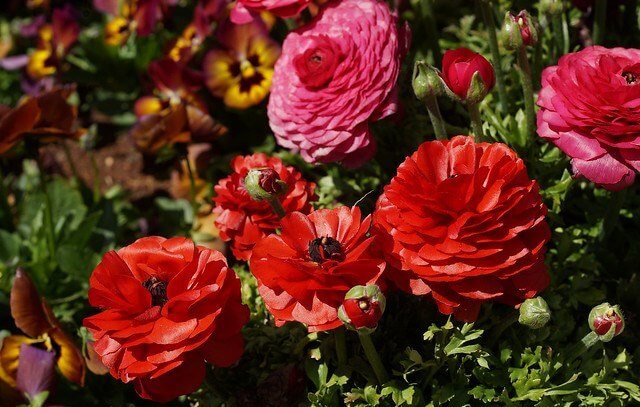

Further care for plants planted in open ground will consist in timely watering, weeding and loosening of the soil.
Also ranunculus grown in the garden will need periodic feeding. Especially love these flowers organic fertilizers in the form of well-rotted cow or horse manure, wood ash and humus or vermicompost.
↑ Upward,
You may also be interested in:
- Eustoma - photo of color, growing from seeds, planting and care in the open field and at home, in a pot, what does indoor lisianthus look like, soil, varieties, flowering
- Anemone - flower photo, planting and care in open ground and at home, soil composition for growing in a pot, description, flowering time, varieties and types, plant propagation, what a perennial looks like
- Butcher - a photo of a plant, medicinal properties, a description of a flower, caring for indoor plants, reproduction, types, maintenance at home, flowering time, transplant, soil
- Freesia - photo of a flower, planting and care in the open field, growing homemade freesia in a pot, description of the plant, flowering, planting bulbs, varieties
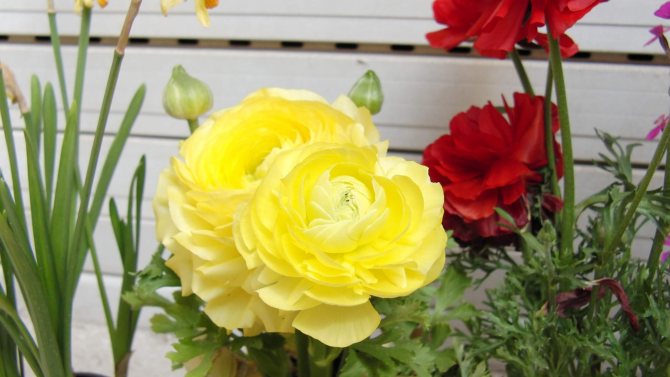

Unfortunately ranunculus does not tolerate frost and for the winter, its tubers should be sent to a cool place in the house, after having thoroughly dried them.
The duration of such a dormant period should not be less than 1 month, after which the plants can be planted again - for example, in a pot.
↑ Up,
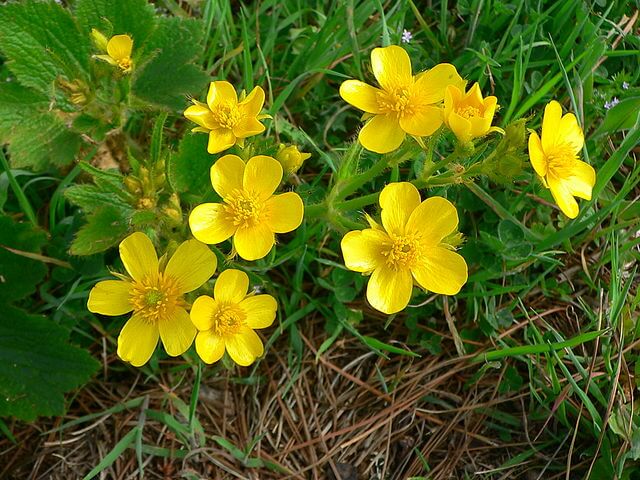

1.2 Reproduction - growing from seeds
Most often propagated bulbs - in large, mother plants, several small daughter plants often appear around the main tuber - when transplanting, they are separated and after a short period of dormancy, they are seated in separate containers.
From 3 to 7 daughter nodules can appear around each tuber per season.
↑ Up,
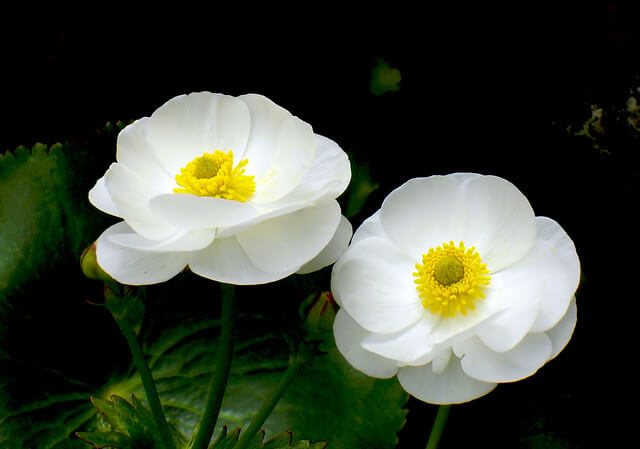

You can grow potted ranunculus at home from seed... The greatest germination have freshly harvested seeds, but it is also small.
You can collect the seeds yourself - this procedure is carried out in calm and dry weather, only from ripe seed pods. It is believed that the seeds should be collected from the very first flowers - they will be the most viable.
In order not to lose the precious planting material, the inflorescences can be pre-wrapped with a piece of bandage or covered with plastic wrap. After harvesting, the seeds are stored for a month at normal room temperature.
Before sowing, the seeds must go through a mandatory cool stratification - this is the only way to increase their germination. For about 8 weeks they are placed in the refrigerator in the vegetable storage compartment.
↑ Up,
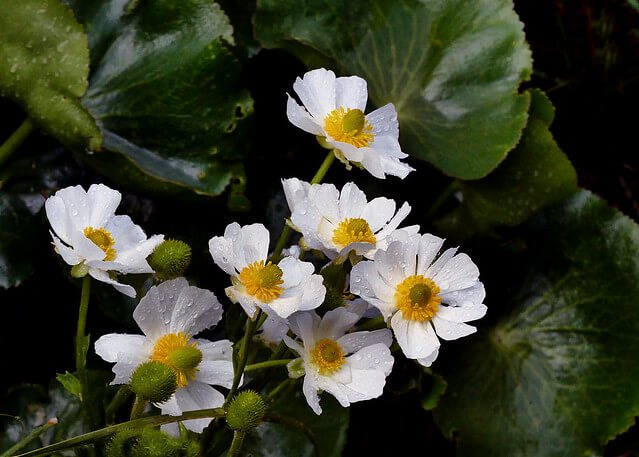

- Seeds sown at the end of winter or in spring with a loose, well-moistened nutrient soil to a depth 1 - 2 cm.
- The planting container should be about 8-10 cm high.
- The drainage layer in the form of fine expanded clay at the bottom of the container will be 1 - 2 cm high, the rest of the place will be occupied by soil - it should not reach the top of the container by 2 - 3 cm.
- Before sowing, the substrate is thoroughly moistened from a spray bottle with a fine spray, and the seeds are soaked for several hours in a solution of growth hormones.
- Seeds are laid out on the surface of the substrate in such a way that between them a distance equal to 2 - 3 cm.
- From above, the seeds are covered with a very thin layer of soil or simply sprinkled with river sand about 2 - 3 cm thick.
You can also sow the seeds directly into separate cups.
↑ Up,
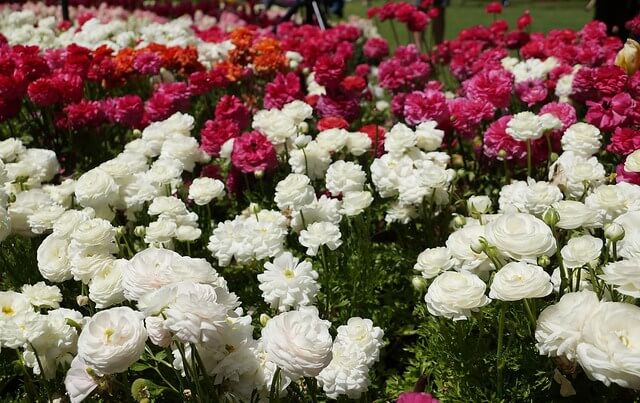

The seedlings are placed in a cool place with a temperature of about 15 - 17 degrees Celsius out of direct sunlight and covered with a transparent plastic hood or glass to maintain uniform humidity.
The created greenhouse conditions will facilitate faster germination of seeds.
It is worth periodically removing condensation from the shelter by soaking it with a paper towel.
The first shoots can be seen already after 15 - 20 days... With the appearance of the first seedlings, the shelter must be removed.
The first pick carried out with the appearance of 2 - 4 true leaves, planting plants in small cups.
When picking, young plants can be slightly deepened - they can be placed in the ground up to the most cotyledonous leaves.
↑ Up,
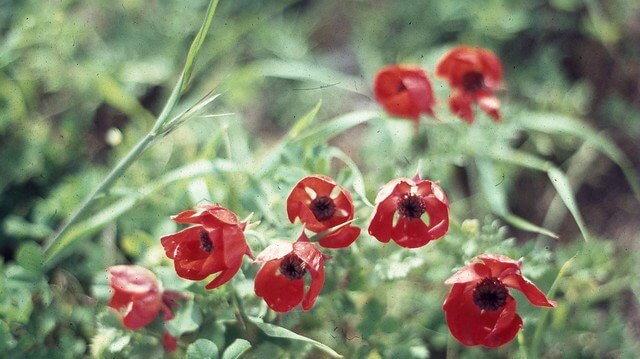

When watering, make sure that moisture droplets do not fall on the tender young leaves - water with a syringe only at the root or immerse the container with plants for a few minutes in a large container of water for bottom irrigation. In open ground such specimens are planted in the second half of May... Leaf rosettes appear in the first season. Plants obtained from seeds bloom only in the second year.
↑ Up,
You may also be interested in:
- Alstroemeria - flower photo, planting and care, growing in the open field and at home, description, varieties, soil composition for keeping home alstroemeria in a pot
- Carnation - photo of a perennial plant, planting and care in the garden, flower reproduction - growing from seeds, useful properties, soil, watering, fertilization
- Gerbera - photo, home care, growing indoor flowers in a pot, planting and care in the open field, reproduction - growing from seeds
- Hydrangea - photo, planting and care, growing in open ground, description, varieties, soil composition for keeping home hydrangea in a pot
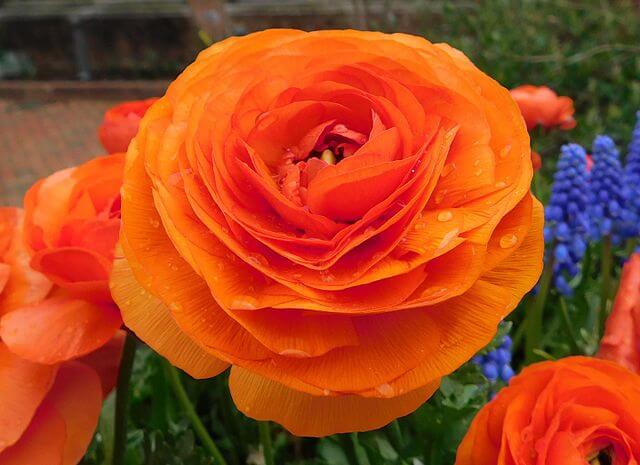

1.3 Care, how to store ranunculus tubers
Ranunculus is very unpretentious and does not require special conditions, therefore it is often grown indoors, however, this plant also requires adherence to certain agricultural techniques.
Do not remove dying leaves from the plant - they continue to feed the bulb until the very last moment.
After flowering and dying off, the ground part of the bulb is stored in a cool and dry place.
Plants will appreciate your stay outdoors in the warm season - choose a place for the flower where it will be protected from strong wind, rain and direct sunlight.
Timely remove wilting flowers - this will stimulate the plant to form new buds.
After the ground part dies off, the tubers are removed from the pot, cleaned of soil residues and dried. For storage the tubers are placed in a cool and fairly dry place at a temperature 15 - 18 ° C.
Too high air humidity at this time can lead to the development of rot, so it should be no more than 60 percent.
Unfortunately, plants may bloom less abundantly with age, so experienced growers advise buying fresh ranunculus tubers every year.
↑ Up,
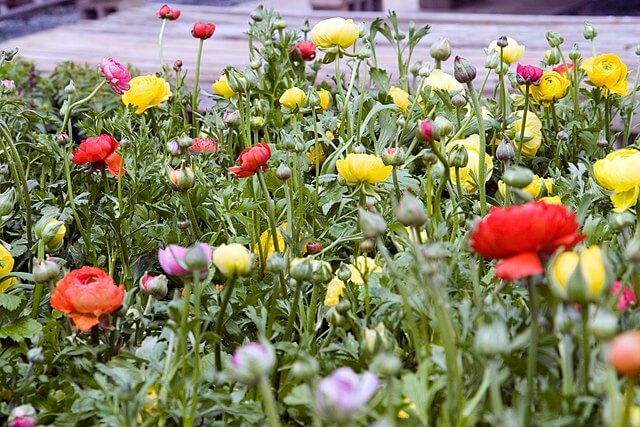

1.4 When the ranunculus blooms in a pot
The flowering period can last 4 - 7 weeks, depending on the conditions of keeping the plants can bloom in any season.
Ranunculus can be used as a forcing plant and get beautiful flowers for any desired holiday. After planting in the ground and before flowering, it takes about 60 days.
To extend the flowering time, plants are placed after the appearance of buds in partial shade, in a cool room, and watering is slightly reduced.
↑ Up,
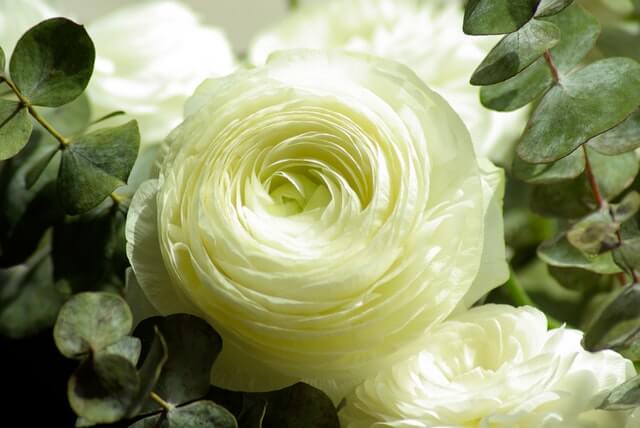

1.5 Growing conditions - soil
Nutritious and loose soil with neutral pH and excellent drainage.
Ranunculus prefers the rich organic soils - a mixture of foliage and sod land with humus is suitable for growing it.
To improve drainage, coarse river sand, perlite or vermiculite are added to the soil.
Dried and disinfected, crushed eggshells can be added to the soil for growing these plants - it will nourish the plants and make the soil looser.
↑ Up,
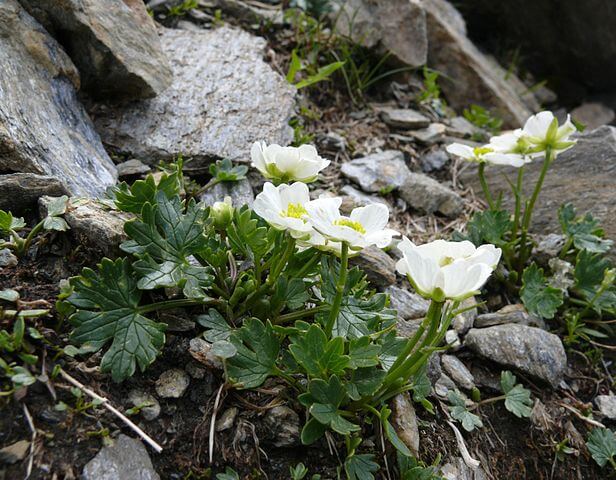

1.6 Temperature
The planted bulbs are kept cool for some time - at a temperature of about 12 - 14 º C.
With the appearance of the first signs of growth, the temperature rises to 18 - 20 º C.
Ranunculus love cool conditions, but can't stand long frost - their bulbs can die.
Exposure to extreme heat can shorten flowering times.
With the death of the ground part, the bulbs are kept in a dry and cool place with a temperature of about 5º C.
These plants do not tolerate minus temperatures, but they do not like intense heat either - the leaves and stems in this case develop weak and look lethargic.
↑ Up,
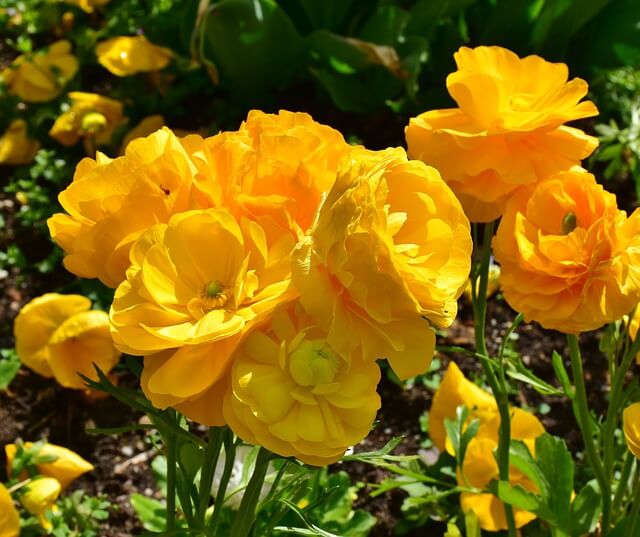

1.7 How to transplant ranunculus
Tubers are planted into a light substrate in any season, in such a way that their tops stick out slightly from the ground.
From the moment of planting, it is no longer worth disturbing the plants - the ranunculus does not tolerate the transplant and for a long time after it is overloaded.
You can preliminarily soak bulbs in warm water for 3 - 4 hours in solution potassium permanganate and growth hormones - in the process, the bulbs can double in size.
Plants prefer to be in a wide and shallow pot - several bulbs can be placed in such a container.
The most abundant flowering will be in a slightly cramped pot - do not offer ranunculus large containers.
↑ Up,
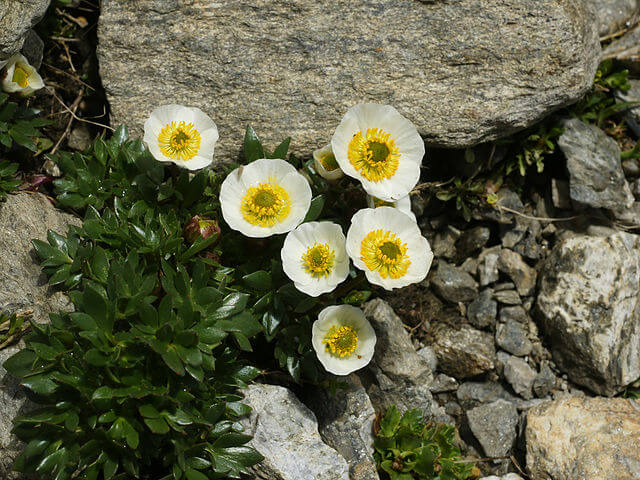

- Grow pots should have large drainage holes.
- Before planting, a good drainage layer in the form of broken brick, expanded clay or clay shards is placed on the bottom of the pot.
- The pot is filled with nutritious and loose substrate and in its upper part they simply make holes.
- The tubers are placed in the wells with the tentacles down so that they protrude slightly from the ground.
- When landing, the earth is well tamped to remove air pockets.
- After planting, the plants are well spilled with water until the earthen coma is completely wetted and left until the first signs of growth appear - only after that watering is carried out again.
- Before the first signs of growth appear, you can even cover the container with crops with transparent plastic or glass to maintain uniform moisture.
↑ Up,
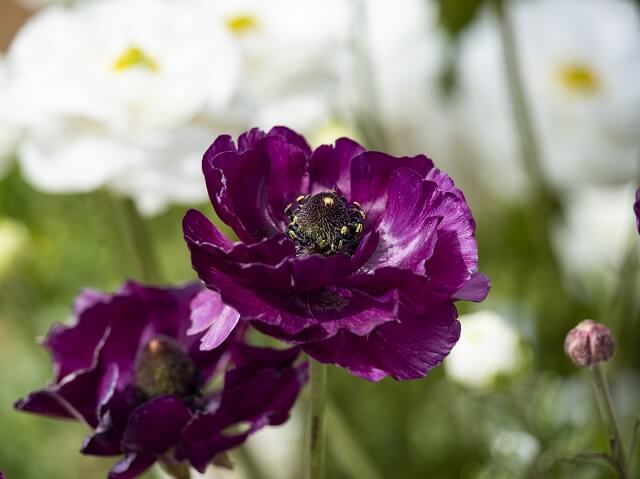

1.8 Diseases and pests
- Exposing the bulbs to moisture and heat during dormancy can cause them decay - in this case, mold may appear on the leaves and stems, and the plant will shed its buds.
- When lack of light the plants will bloom less abundantly.
- When grown in bright sunlight, flowering times are shortened, and the flowers themselves fade.
- Insufficient watering leads to loss of turgor by the leaf blades and can even destroy the plant.
- Fungal diseases appear when grown in poorly ventilated rooms with cool temperatures and high air humidity.
Of insects - pests plants can be attacked by spider mites, aphids, thrips.
Insects are pests
| Insect name | Signs of infection | Control measures |
| Spider mite | Unobtrusive spider webs on the leaves, yellowing and falling foliage with extensive lesions. The surface of the sheet plates becomes dead and covered with small cracks. Plant development slows down. | Folk ways... Plants can be rinsed in the shower and left in the bathroom in a humid atmosphere for half an hour. Irradiation with an ultraviolet lamp every week for 2 minutes. Chemicals based on pyrethrum, sulfur powders, Fitoverm, Actellik. |
| Aphid | Sticky droplets appear on the leaf plates, the leaf plates curl and deform, delicate buds and young leaves wither. Insect colonies can be seen on the tops of the shoots, on the buds or on the underside of the leaf plates. The flowers of aphid-infested plants may become deformed. | Folk ways: infusion of nettle, decoction of rhubarb leaves, wormwood, soap solution, infusion of tobacco and dandelion, onions, marigolds, yarrow, tansy, dusting with ash. Chemicals: Sulfur powders, treatment with green potash soap of green mass without getting into the ground, Decis, Aktellik, Fitoverm. |
| Thrips | The appearance of yellow spots on the leaf blades, small brown dots can be observed on the underside of the leaves. When spread, the pests cause the leaves to turn yellow, dry and fall off. | Folk ways... Increase the humidity of the air, wipe the surface of the leaves with soapy water to reduce the number of pests. Preparations based on pyrethrum - 2-fold treatment with an interval of 7 - 10 days, spraying with tobacco infusion, infusion of yarrow or Persian chamomile, decoction of cyclamen tubers. Chemicals: dusting with sulfur powders, the use of anabazine - sulfate in a soap solution. |
↑ Up,
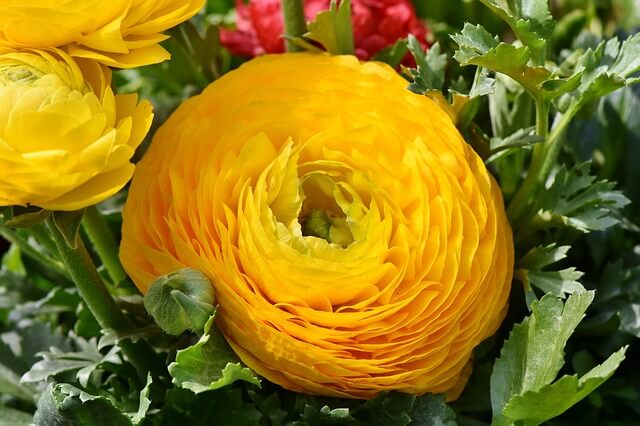

1.9 Top dressing
Ranunculus in a pot has a limited nutritional area and needs additional nutrients in the soil.
With the onset of new growth and before flowering, ranunculi feed fertilizers for flowering plants at half concentration every 2 weeks.
The main nutrients during this time are potassium and limestone.
When the leaves begin to die off, feeding is stopped and resumed again in the spring, about 10 days after the bulbs are planted in the ground.
Top dressing is carried out only after abundant watering - the ingress of a concentrated nutrient solution to the root system can leave a burn.
Plants respond positively to application organic dressings.
↑ Up,
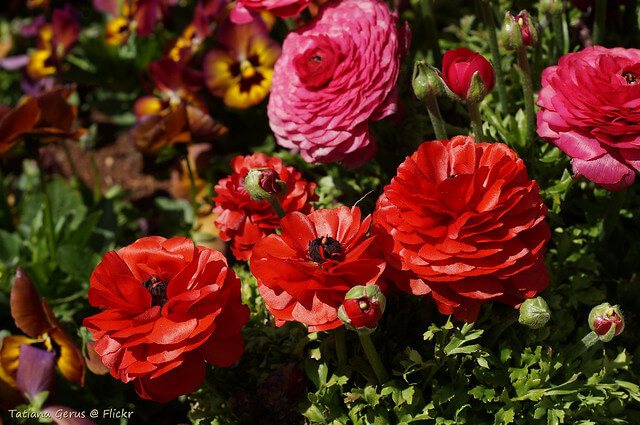

1.10 Lighting
Plants should receive direct sunlight daily for 3-4 hours - in the evening and morning hours. Light shading should be done in the spring and summer during daylight hours when sun activity is too high.
In autumn and winter, it is worth choosing the most illuminated place and using artificial lighting fluorescent or phytolamps.
For the onset of flowering active growth, daylight hours should be at least 12 - 14 hours a day.
When using artificial supplementary lighting, you should definitely turn it off at night, imitating the change of day and night.
During the flowering period, it is better to transfer the plant to partial shade.
The most suitable windows for growing a flower are those that overlook eastern or western side.
You may also be interested in:
- Euonymus - photo, description, planting and care, shrub varieties, soil for growing indoor plants, using an ornamental tree in landscape design, keeping at home
- Datura - a photo of a flower, a description of a plant. flowering time, reproduction - growing from seeds, planting and care in the open field and at home, what a poisonous plant looks like
- Periwinkle - photo, planting and care in the open field, description of the plant, useful properties, growing from seeds, planting seedlings in a flower bed, use in landscape design, home care
- Lemon - photo, home care, growing indoor lemon from seed, keeping the house - grafting, flowering, fruiting, description of varieties, diseases and pests, how to transplant a tree
- Immortelle - photo, medicinal properties of herbs and contraindications, collection and use of plants in folk medicine, description, planting and care in open ground, growing at home, reproduction
↑ Up,
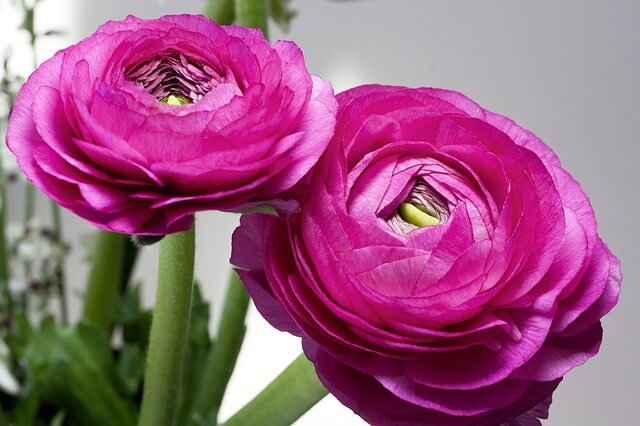

1.11 Watering
Water regularly during the period of active growth and budding - between waterings, only slightly dry the soil in its upper part. Gradually reduce the frequency of watering as it blooms - the ranunculus should be in practically dry soil when the ground part dies off.
Use only well for watering separated water at room temperature.
Excess moisture that appears in the pan after watering, drain after a few minutes.
↑ Up,
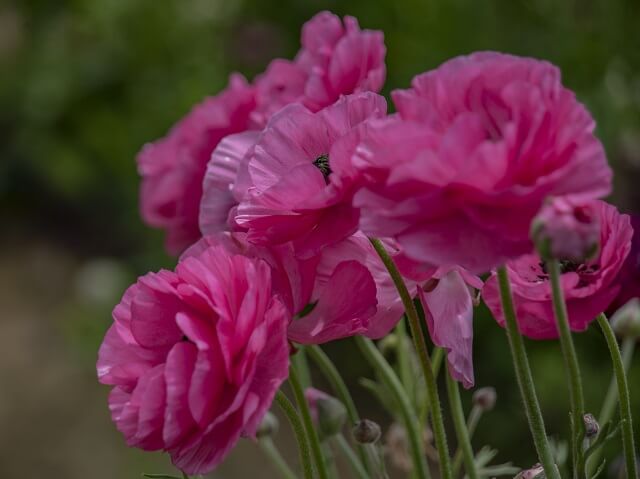

1.12 Spraying
Plants can withstand the usual atmosphere of living quarters, but they will feel better if the air humidity is increased using a tray with wet expanded clay or sphagnum moss.
Spraying should be carried out only in the morning, so that the moisture has time to evaporate before dusk. When spraying, droplets should not fall on buds and flowers.
To increase the air humidity, you can use room humidifiers or place decorative fountains near the flowers.
Placing multiple plants in a confined space also helps to increase atmospheric humidity.
You can surround the pot with a layer of well-moistened sphagnum moss - water evaporating from its surface will naturally humidify the air near the plant for a long period of time.
When placing, remember that the ranunculus does not tolerate cold drafts - when ventilating during the winter months, take the plants to another room or provide them with a good shelter.
↑ Up,
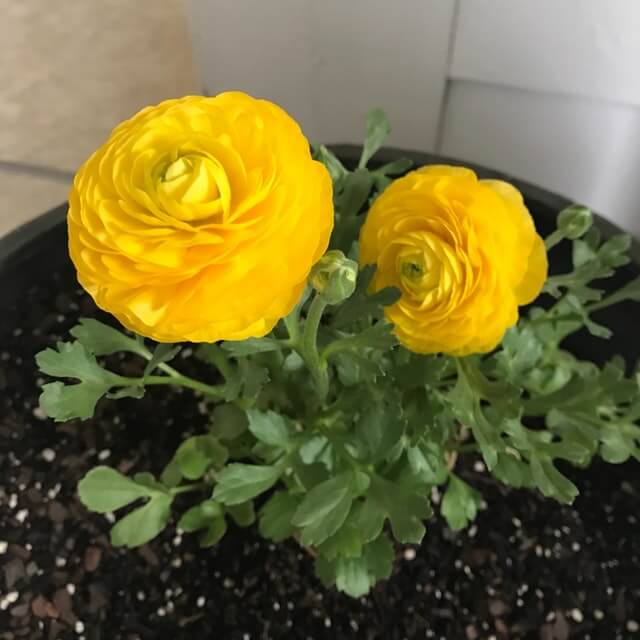

1.13 Purpose
Plants are often used for distillation and with proper care, they are able to bloom at any desired time. From planting the bulbs to the appearance of the buds, an average of about 60 - 90 days.
Flowers are appreciated by florists - when cut, they do not lose their attractiveness for a long time, and their bright appearance allows you to create gorgeous bouquets.
If possible, it is worth cutting off the unblown buds - they will open already in the vase.
Planting different types of bulbs in one pot allows you to get a bright bouquet during the flowering period.
↑ Up,
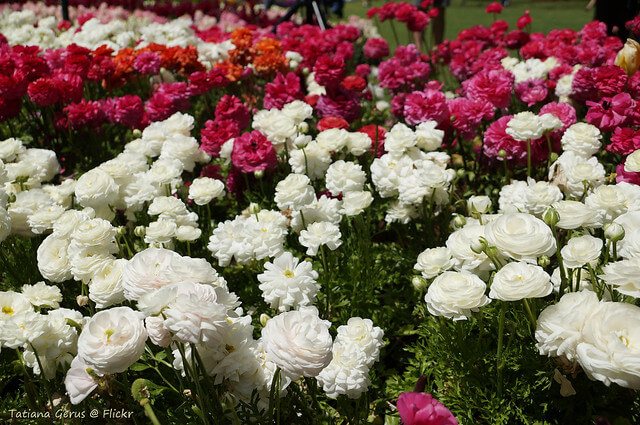

1.14 Note
Plants poisonous - keep them away from small children and pets. When working with the plant, use gloves, and after contact with ranunculus, wash your hands thoroughly with soap and water.
↑ Up,
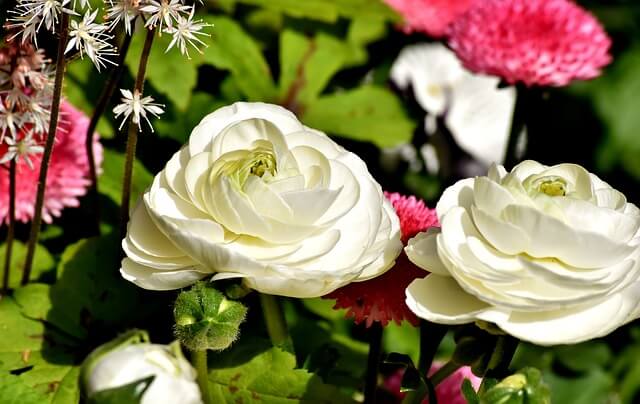

Hydroponics.
What does ranunculus look like and reproduce?
Ranunculus is a perennial herb of the buttercup family. Asia Minor is considered his homeland. The flower has several simpler names: Asiatic buttercup, adonis, fierce color.
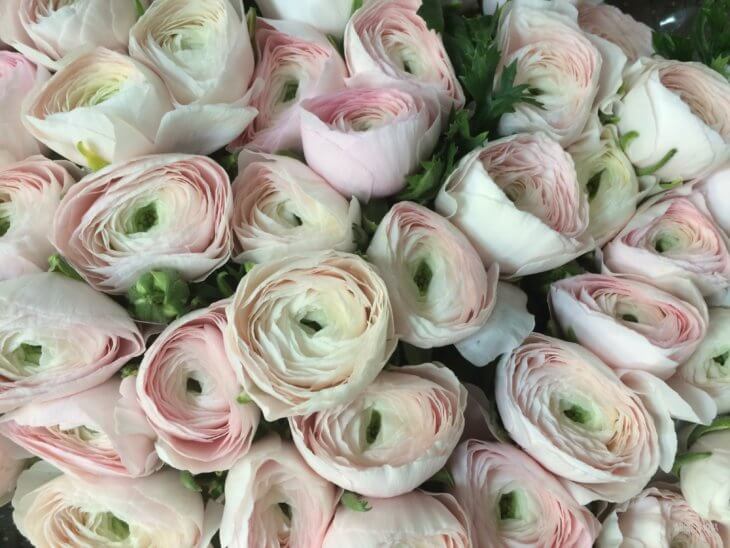

Lat. Ranunculus
The cultivation of buttercups has been known since the 16th century. This culture was spread almost all over the world. It was cultivated in Asia, in Europe and northeast Africa. Therefore, ranunculus has many additional definitions.
This flower was also known in antiquity, which is confirmed by the numerous mentions of buttercup in myths and legends. Recently, the popularity of buttercups has been increasing.
They are increasingly used not only as a decorative decoration, but also when drawing up flower bouquets and compositions.
Translated from Latin, ranunculus means "froglike". The flower got this name because in natural conditions it grows near the reservoir or directly in them.
In nature, there are more than 500 species, but only undersized hybrids are grown at home. They have large flowers and a wide leaf blade.
Lush and long flowering. Rosettes on the bush bloom continuously for 1-2 months. Usually in June-July.
Reproduction of ranunculus of decorative varieties is carried out in two ways:
- Seeds
- Bulbs
To germinate seeds, you must first soak them in water for 2 hours. Then they are planted in a prepared soil substrate to a depth of 3-4 cm.
With the help of glass or oilcloth in a flowerpot, a greenhouse effect is created. The soil is periodically moistened with a spray bottle. After the sprouts appear, the pot opens.
Transplanting and diving of seedlings is carried out after the appearance of 5-6 leaves. This method is long and laborious and often does not bring the expected result.
Ranunculus propagates more efficiently by bulbs. The plant annually gives an increase of 5-7 young shoots. They are separated and transplanted into a new container. The plant takes root well and blooms quickly. But often there is a shredding of the color rosette.
Experienced florists recommend purchasing new planting material in nurseries every year. Such plants develop much better, their flowering occurs earlier.
Owners of ranunculus, regardless of its type, must take into account the fact that the plant sap is poisonous. Therefore, when caring for him, you should wear protective gloves, and also put the flowerpot out of the reach of children and pets.
Difficulties in growing a plant. Useful tips (Note to the flower grower)
Difficulties include the need for annual planting of ranunculus. The flower does not require much attention, but you need to know some subtleties.
- Ranunculus will grow better if drainage is poured into the hole before planting, it can be pebbles or sand.
- Dig up the tubers shortly after flowering, otherwise you may simply not find them later;
- Do not store tubers too cold in winter. They may start to germinate ahead of time and you will have to plant them in pots;
- You can neutralize too acidic soil for buttercups by mixing peat with chalk;
- When washing the rhizomes of ranunculus before wintering, it is recommended to add a little potassium permanganate to the water;
- Please note that ranunculus juice is poisonous and take safety measures;
- During the flowering period, lime can be added to the dressing, this will improve flowering.
Fertilizing and fertilizing plants
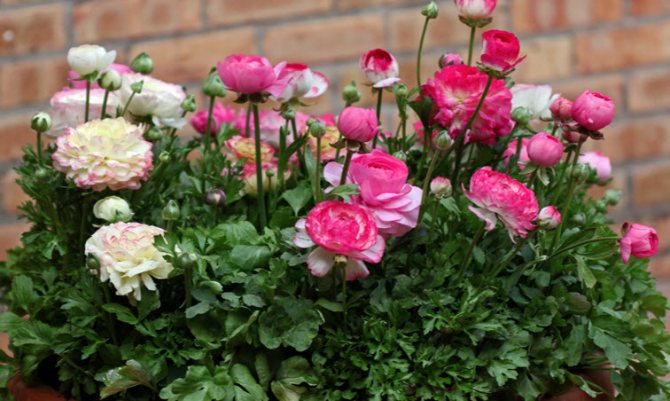

The best fertilizer for ranunculus is vermicompost. When planting, it is very good to add humus to the ground.
During flowering, buttercups need to be fed once every two weeks with potassium salt, potassium sulfate or wood ash.
While a sprout is breaking out of the tuber, it is not necessary to feed the plant, because the roots at this time spend their own reserves accumulated over the winter.
Description of garden buttercups
The garden buttercup is a perennial herb that grows to a height of about 65 cm. The root system is tuberous, the stem is branched, the leaves have a triple dissection. Depending on the variety of ranunculus, flowers can be double or densely double, up to 10 cm in diameter.
This culture is distinguished by a variety of colors. Every year, breeders manage to get more and more ranunculus colors. You can see orange, cream, yellow, lilac and pink buttercups. Bicolor varieties are also common.
Important! The only shade that cannot be found among ranunculus is blue.
Flowers remain fresh after cutting for more than 1 week. But please note that for all the advantages of this plant, it is poisonous, so try to keep it away from pets and children. Stems and leaves contain protoanemonin, a substance that can cause severe irritation to mucous membranes and skin.
Beautiful ranunculus in the photo
Wintering
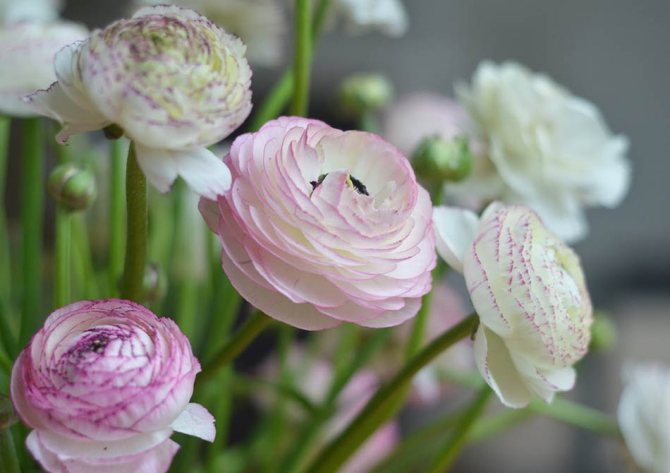

These flowers are not classified as frost-resistant species. Therefore, when the leaves dry up, their tubers must be immediately dug up. It is necessary to dig it out very carefully, since the ranunculus has very fragile bulbs. Wrap them in paper and store them in a cool, well-ventilated storage at about 5 degrees. Before wintering, the plant must be dipped in the foundation solution for half an hour, then dried thoroughly. Well, if your flower grows in a warm climate zone, then you can safely leave it in the ground.
With the arrival of cold weather, you can simply cover the ranunculus with crumbling foliage. Home-grown flowers should be placed in a cool place after the flowering period is over. They will bloom for a while.
Then comes the resting phase, yellowing of leaves and stems. Then you can transplant the flower and place it in a place where the temperature will not be higher than 18 degrees. Since the calm period in ranunculus lasts only a month, then in April you will be able to contemplate new processes. During the entire growing season, each bulb produces 5 shoots that can be planted, or simply simply stored in a cool place, even in the refrigerator on the shelf. The only drawbacks in such preserved tubers are small inflorescences and a weakened plant. Therefore, experienced gardeners choose to purchase new tubers every season.
Provide the plant with appropriate care: cut off faded inflorescences in order to allow new ones to bloom. With the arrival of autumn, it is advised to cut the stem to the very base.
Natural types of buttercups
The most common types of ranunculus are as follows.
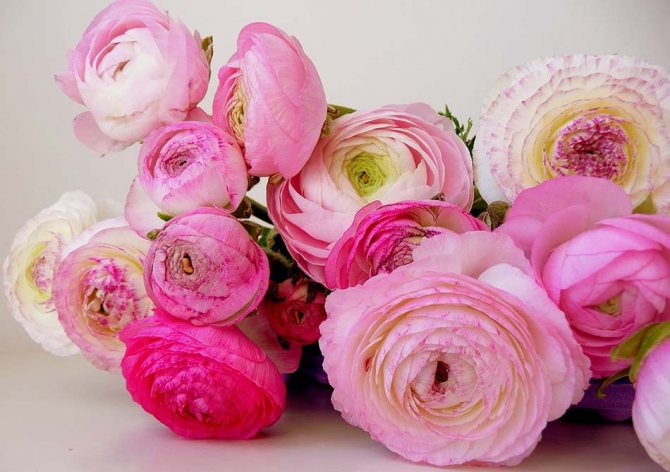

Asian ranunculus
- Asian ranunculus has luxurious double and semi-double inflorescences of various colors, the diameter of which can reach 10 cm. A long flowering period lasts from late spring to August. When the flowers bloom, they are very similar in appearance to roses. Fully blossoming buds resemble poppies in their appearance. This variety is very popular. It is grown both in the garden and at home in pots or containers. It will be used in the decoration of balconies, terraces and rooms. The species with pink and white inflorescences is especially popular. This ranunculus is very often used in the composition of wedding bouquets. Still, you need to know that the juice of this plant is unsafe. Asian ranunculus can grow up to 80 cm tall.Ranunculus is used to decorate festive tables with pleasure and is used at many festive events.
- Peony buttercup has dense double inflorescences of bright purple, pink and white flowers. This variety belongs to the garden ranunculus.
- French, Persian and Terry Buttercups are also very famous and have chic double flowers in all kinds of shades. Just look at the photo of these crazy colorful inflorescences.
Today, many new varieties and hybrids of buttercup have been bred. Ranunculus bicolor, pale pink and radiant yellow are famous for their unusual brightness. It often happens that the ranunculus variety has no name and it is impossible to determine the color of its inflorescence. Therefore, if you decide to make a bouquet of these picturesque flowers, it is better to purchase already blossoming flowers. For a perfect combination of shades of this type, you can view a lot of photos of ranunculus bouquets produced by flower growers.
Choosing tubers for planting
It is rather difficult to grow a perennial buttercup from seeds, so it is propagated by dividing the tuber. You can buy planting material at any gardening store, the main thing is to know how to choose it correctly.
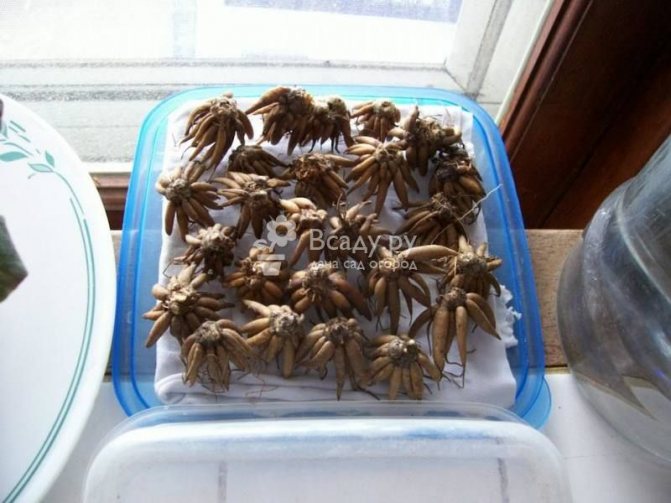

Ranunculus tubers must be whole and dry
It is best to purchase ranunculus for planting in the fall. This will ensure that the tubers were dug recently and not last season. Pay attention to the tuber, it must be strong and intact, without damage, rot, or plaque. The feeding roots are smooth, not broken, and healthy.
Flowering plant
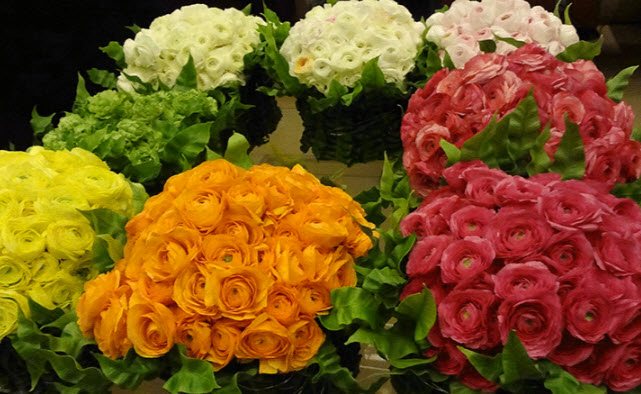

Ranunculus blooms with very beautiful bright flowers. The flowering period is about a month, although it can be extended if the tubers are planted sequentially at different times. Then some buttercups will already bloom, while others will only bloom. Thus, the garden will be decorated with bright colors for most of the summer.
When the plant is in bloom (flowering period), the flower shape
Buttercups begin to bloom around the beginning of June. Flowering can last up to 1 month. The most amazing thing about this flower is its shape. Initially, the flower head has a spherical shape and resembles a small rose. As the bud opens, it looks like a poppy flower. Some varieties have double or semi-double flowers. Buttercup African resembles a peony, sometimes its flowers are similar to dahlias. Several flowers can bloom on one stem at the same time.
The tenderness and variety of colors, as well as the fact that ranunculus retains freshness for a very long time after cutting, is often used to form bouquets for brides.
When grown in flowerpots, it is recommended to plant flowers of different colors nearby to make the flower arrangement more decorative.
Forcing ranunculus
The great advantage of ranunculus is its good forcing ability. Many lovers of flowering indoor plants make buttercup forcing to please themselves in winter with beautiful flowers. You can grow them just for a holiday or some date.
They are grown indoors in pots up to 20 cm deep in loose, fertile, drained soil. In order for a sprout to appear, and then flowers, it is necessary to create conditions close to garden ones, in particular, to extend the daylight hours to 15 hours. If the necessary conditions are met, the buttercup will bloom in 3-3.5 months.

